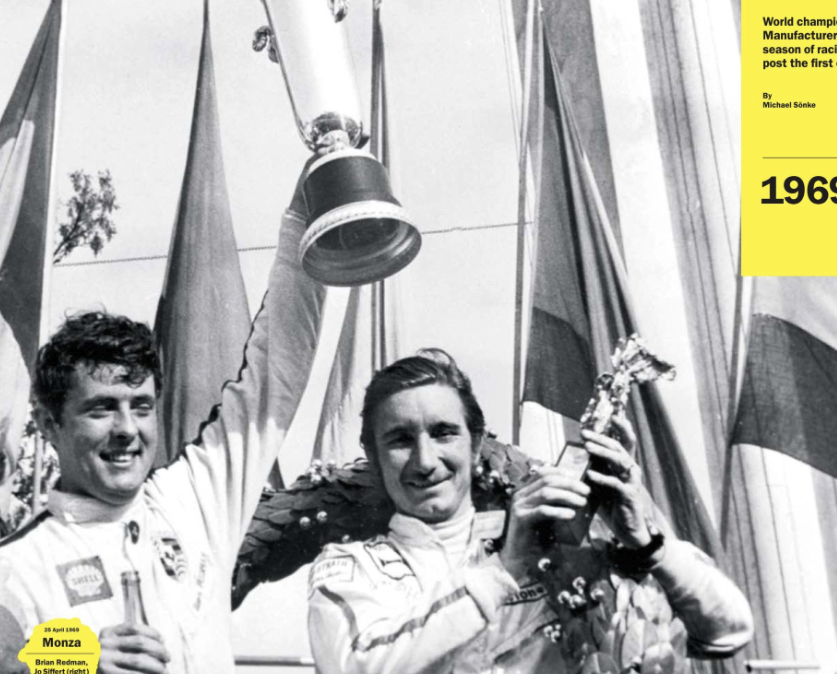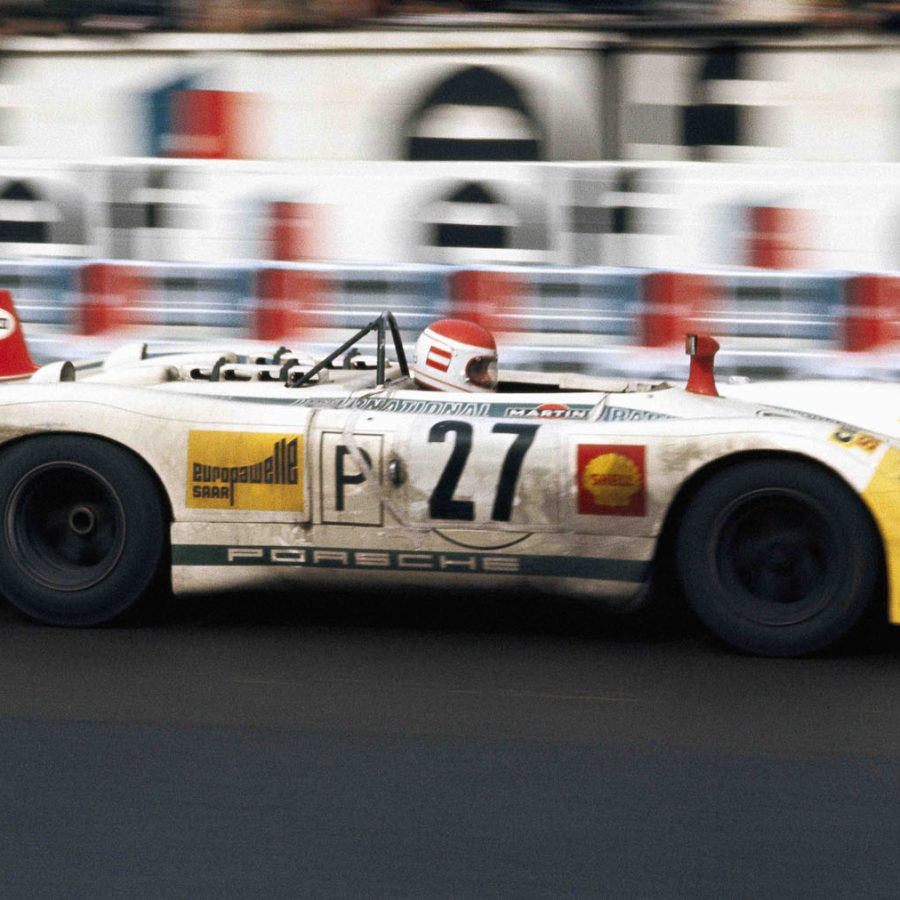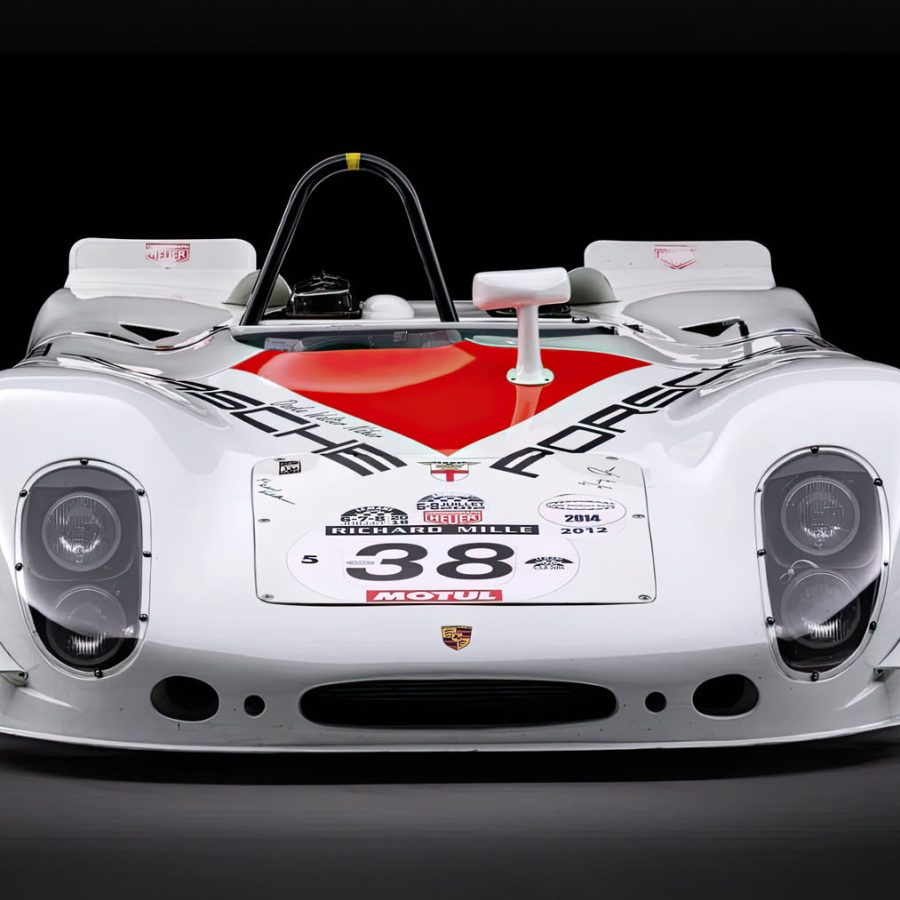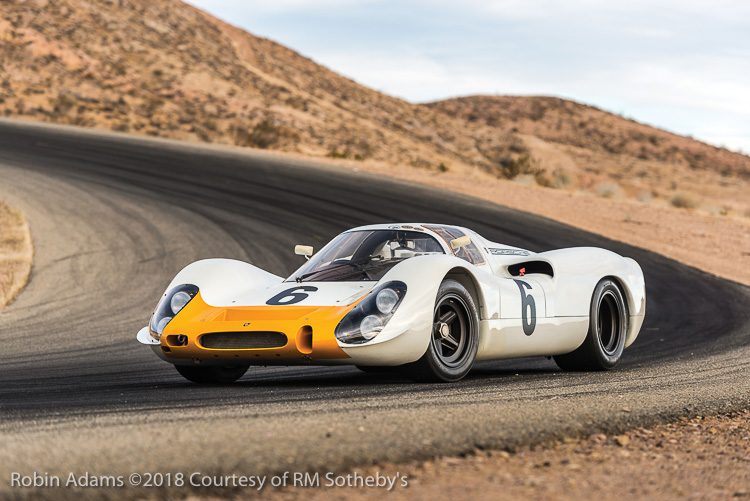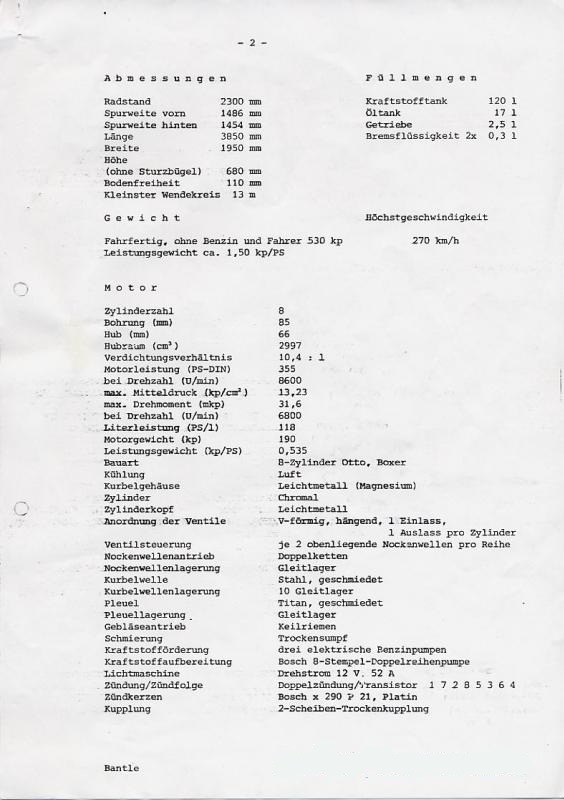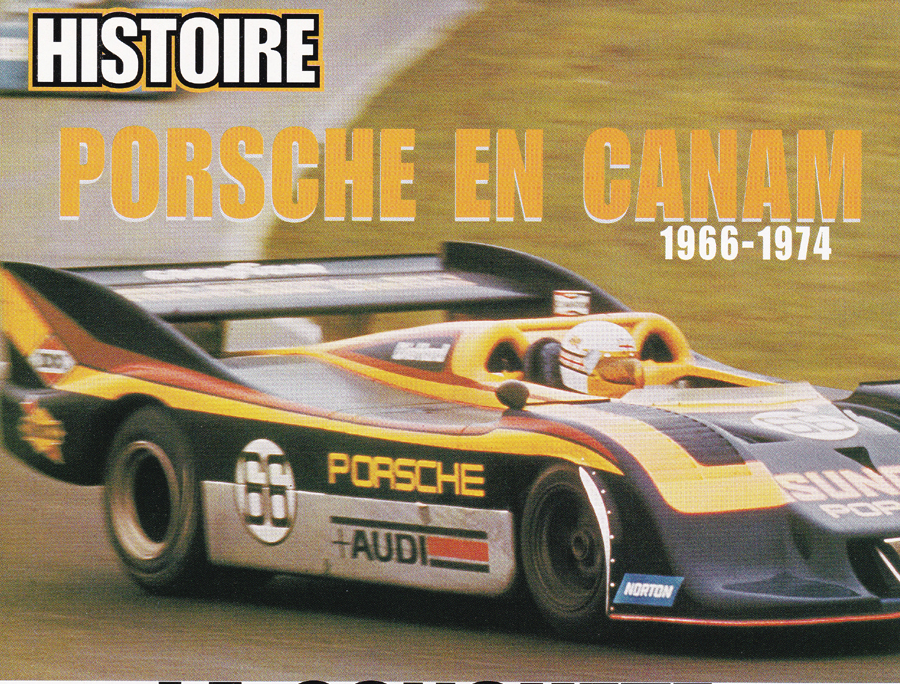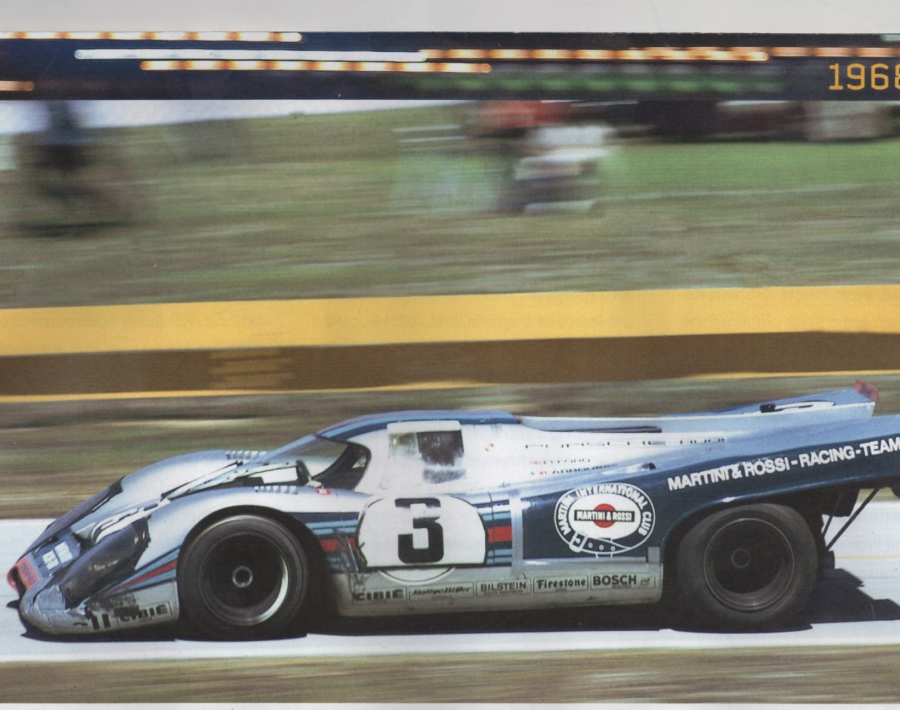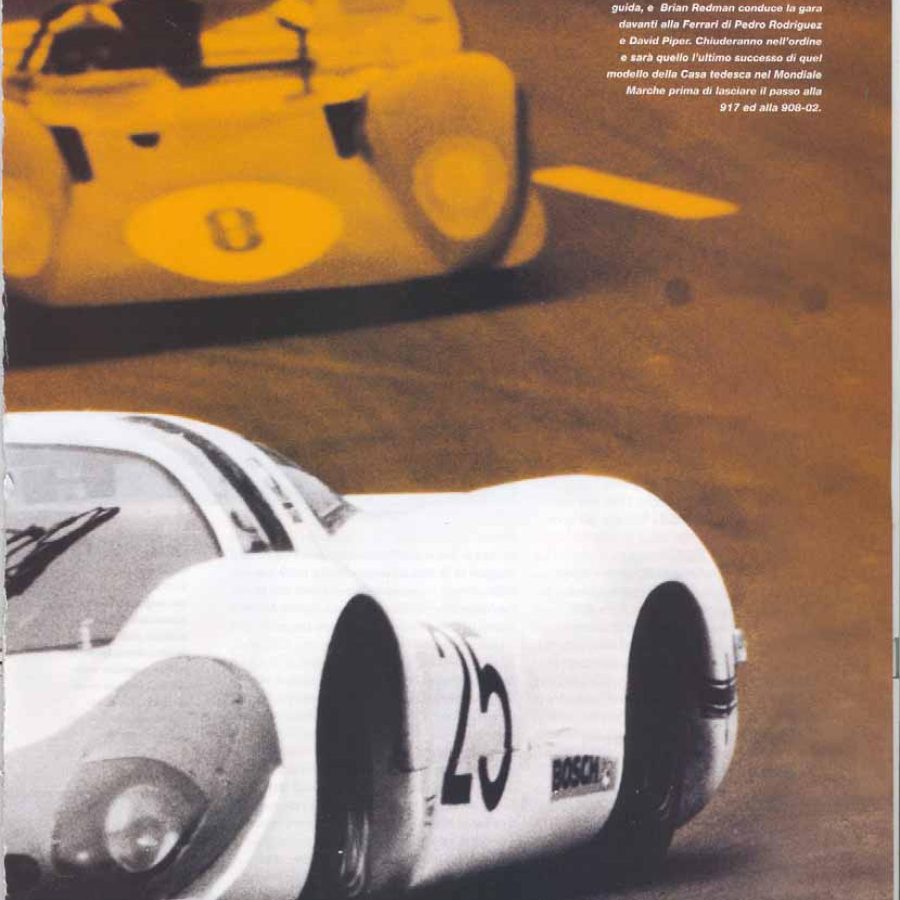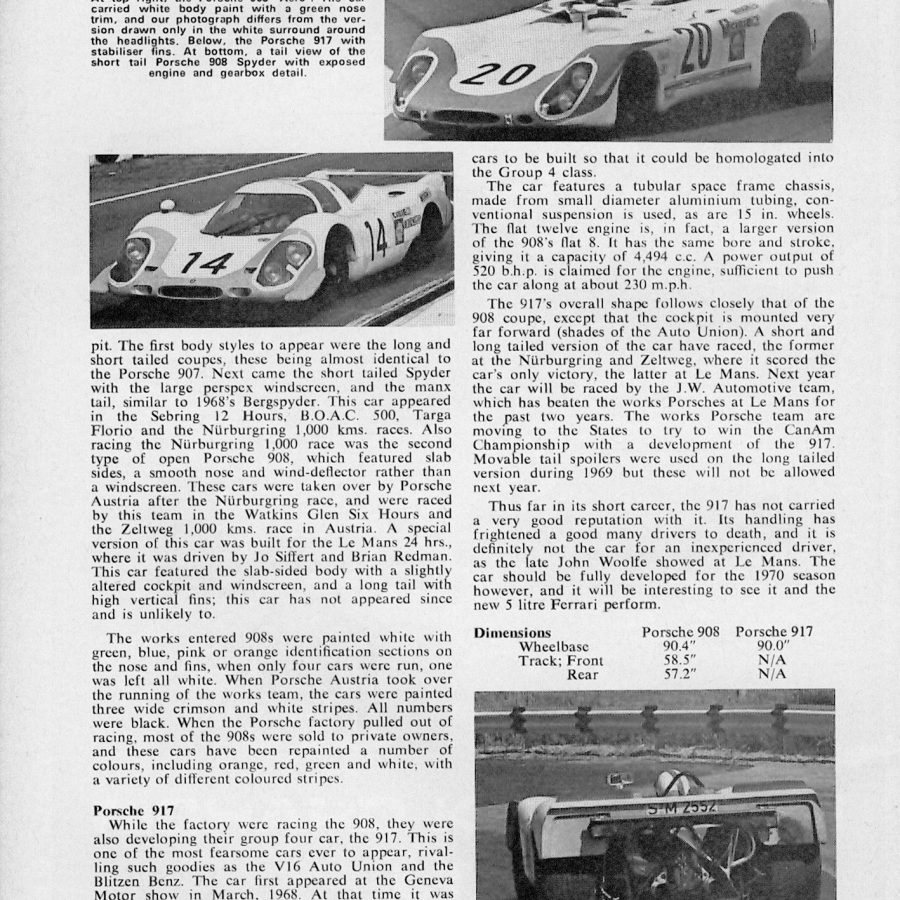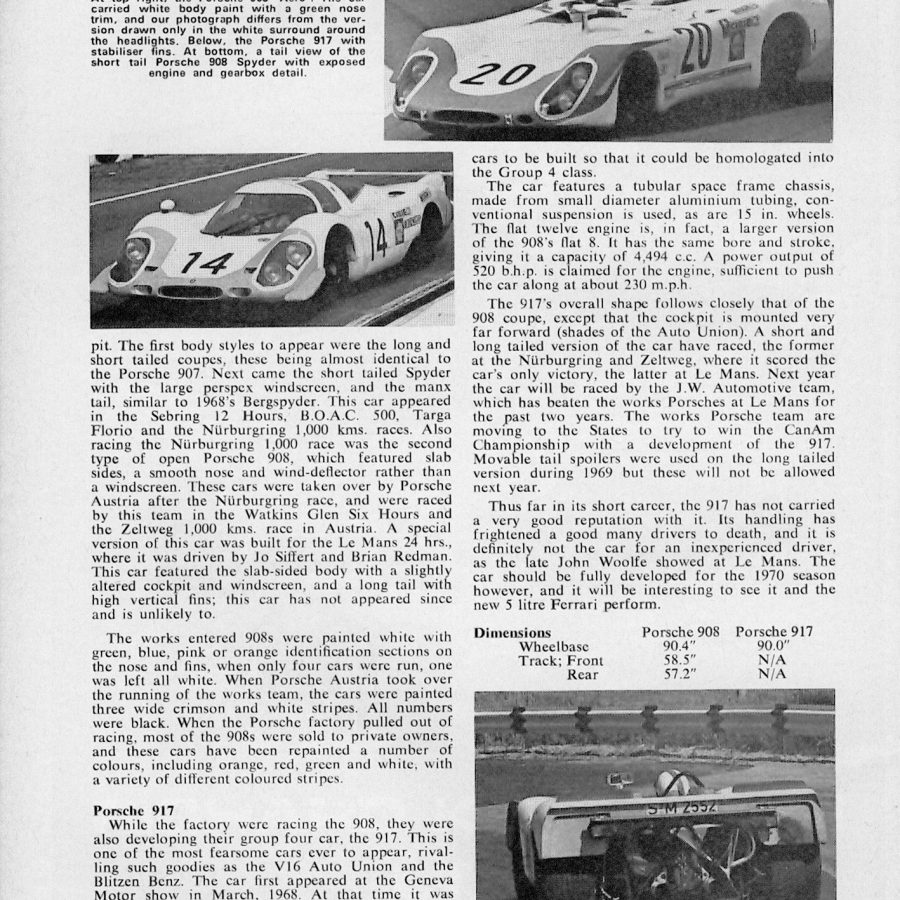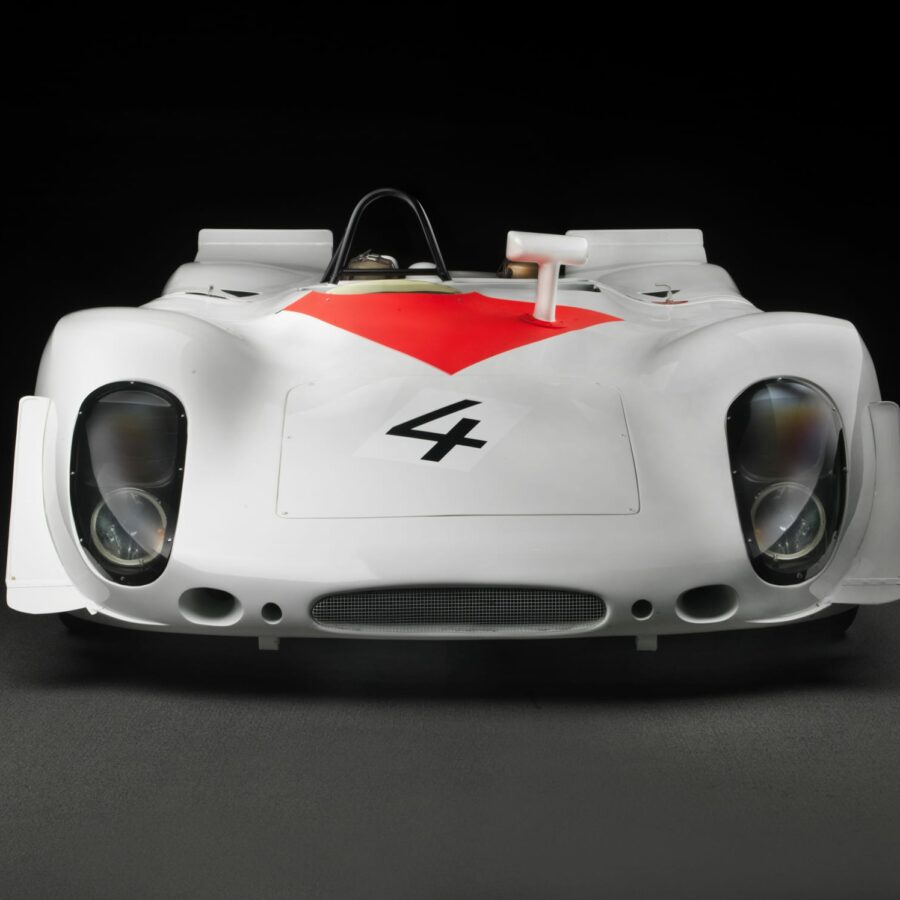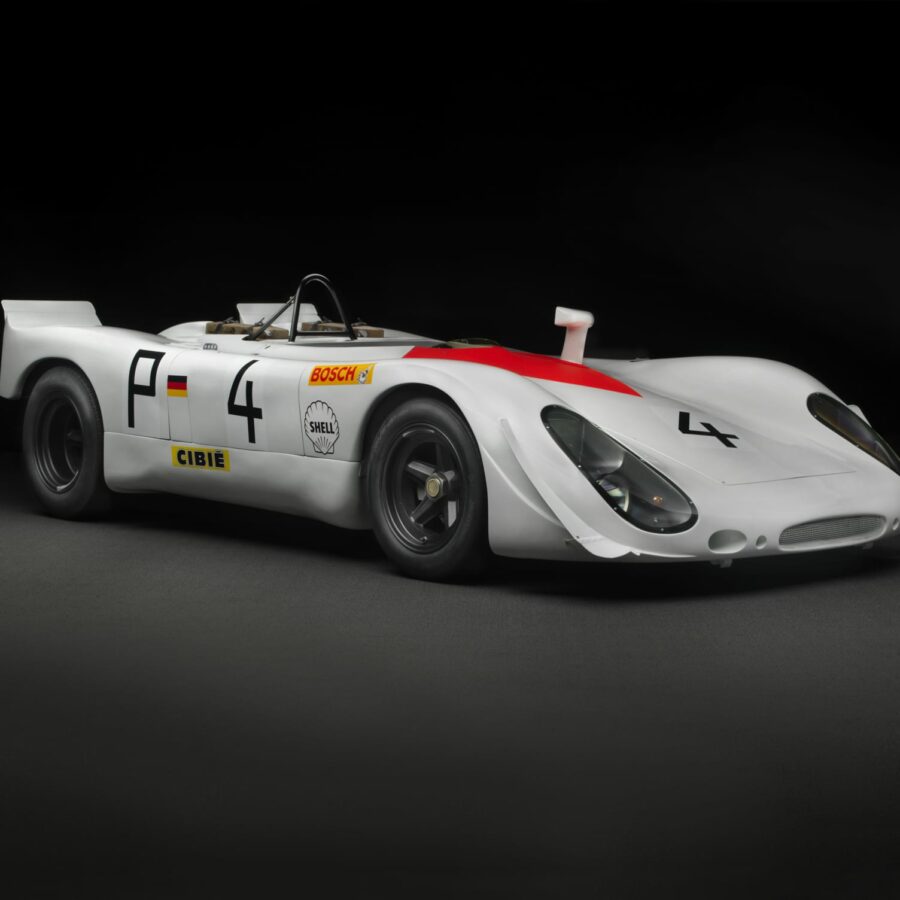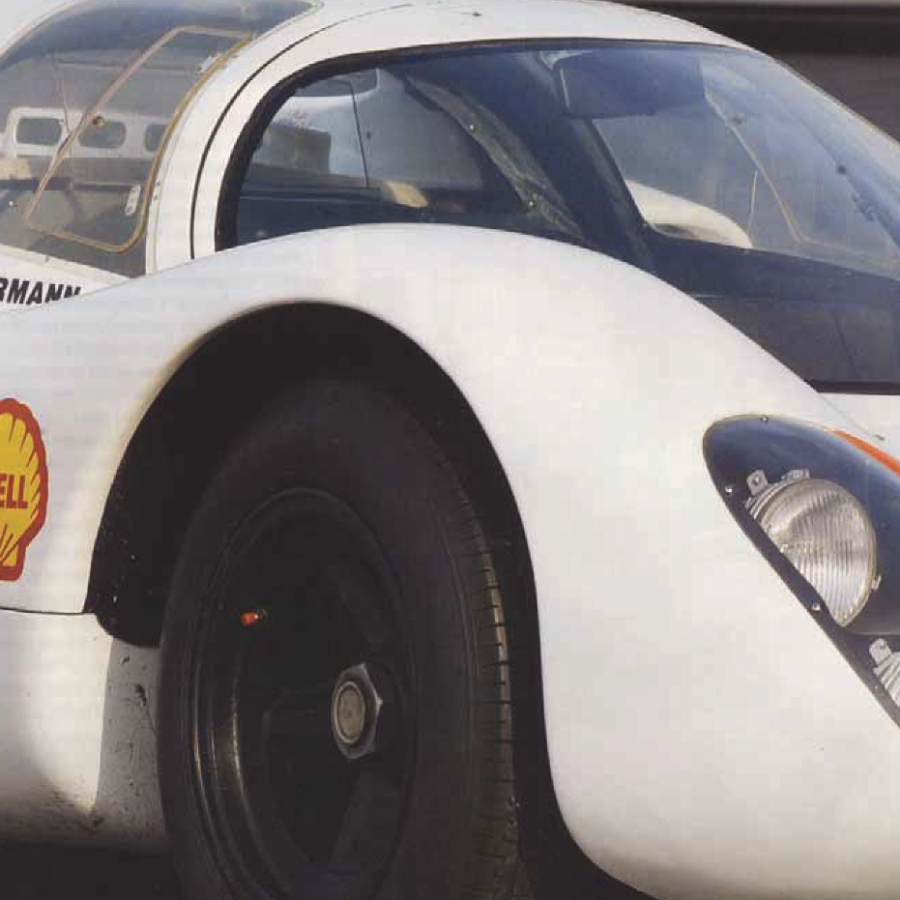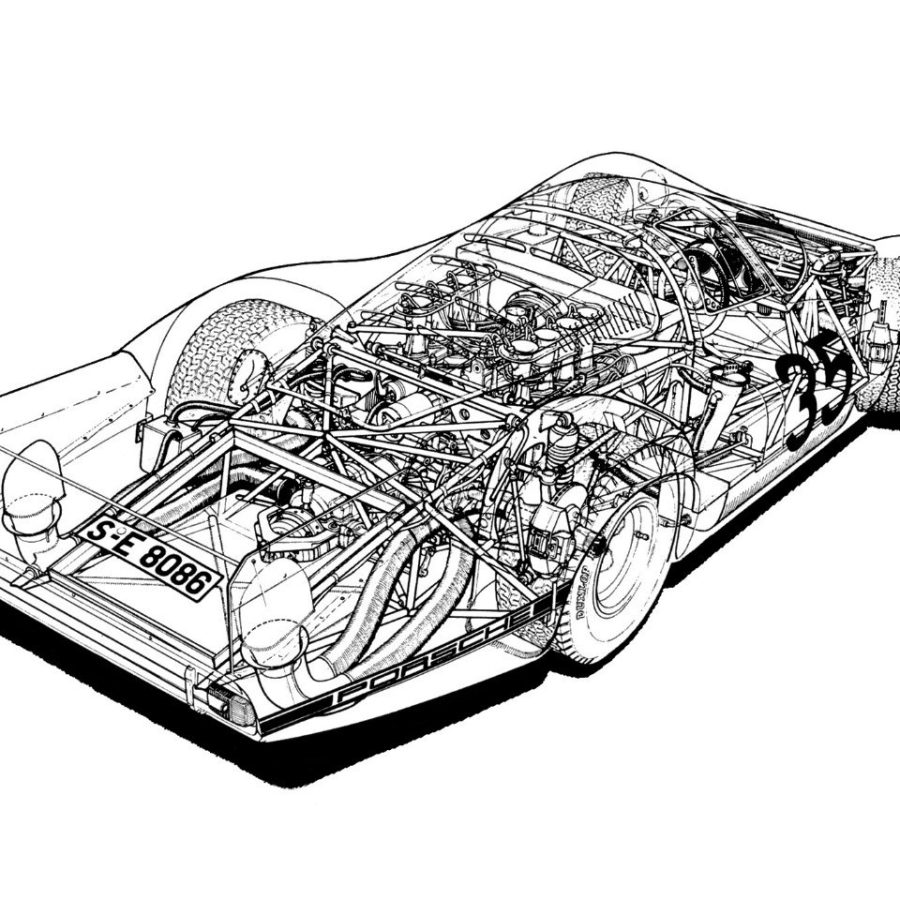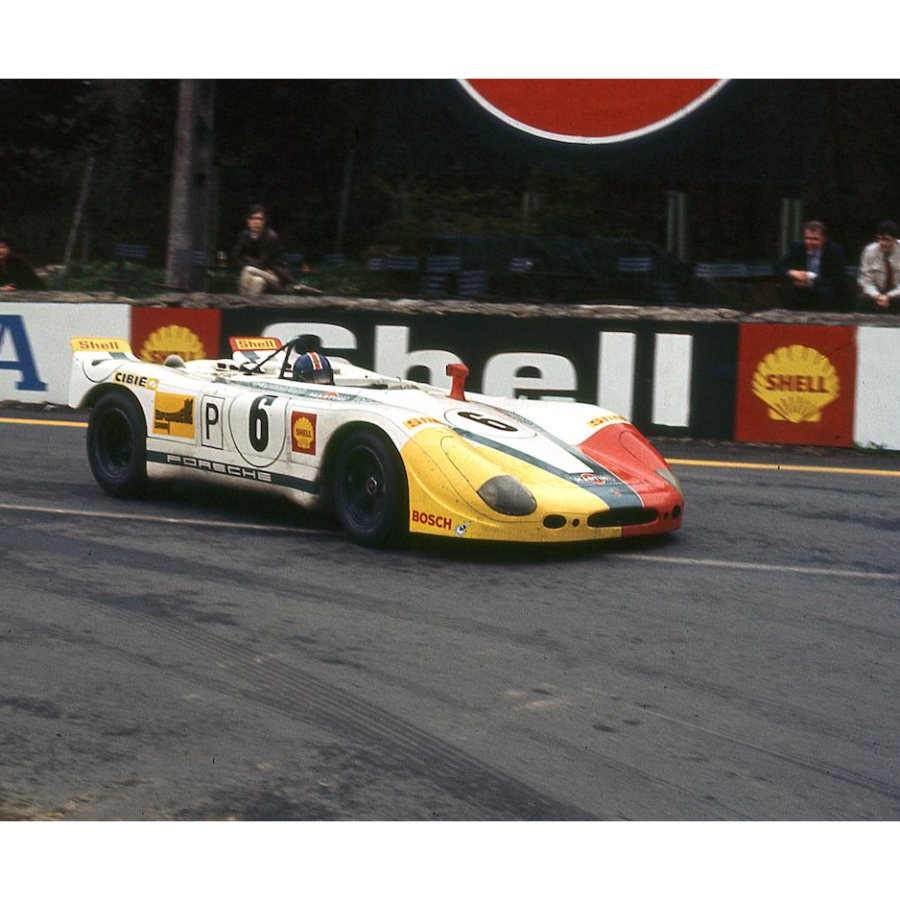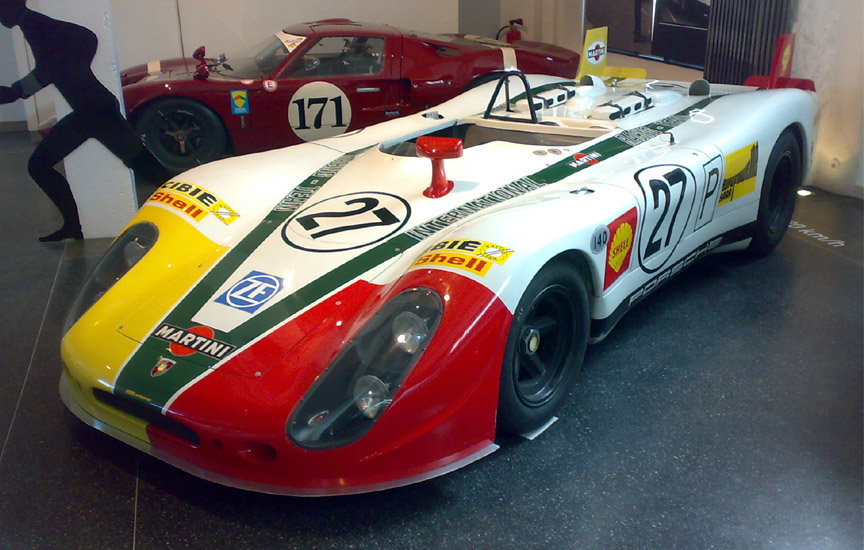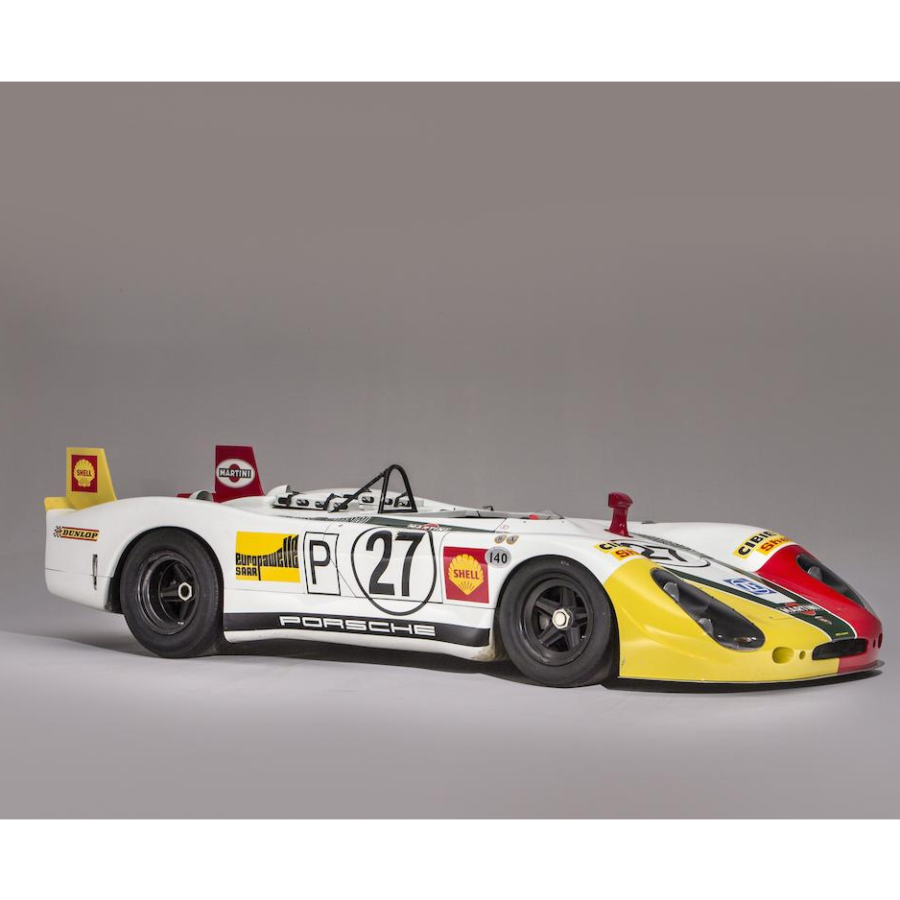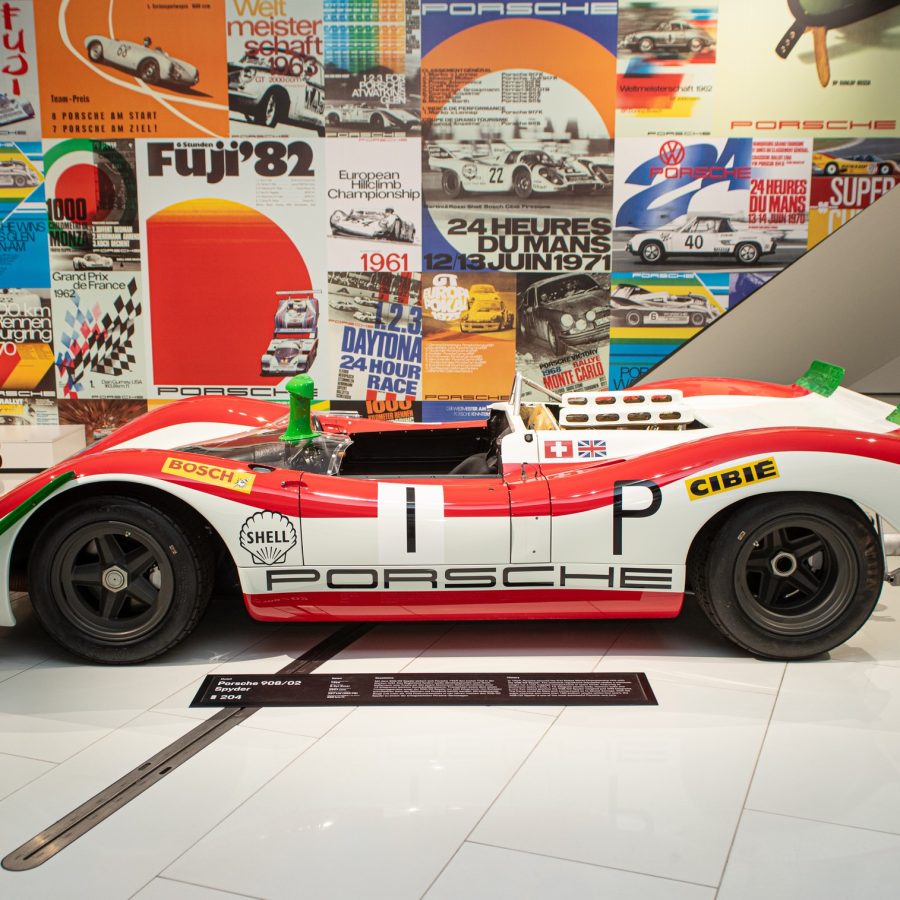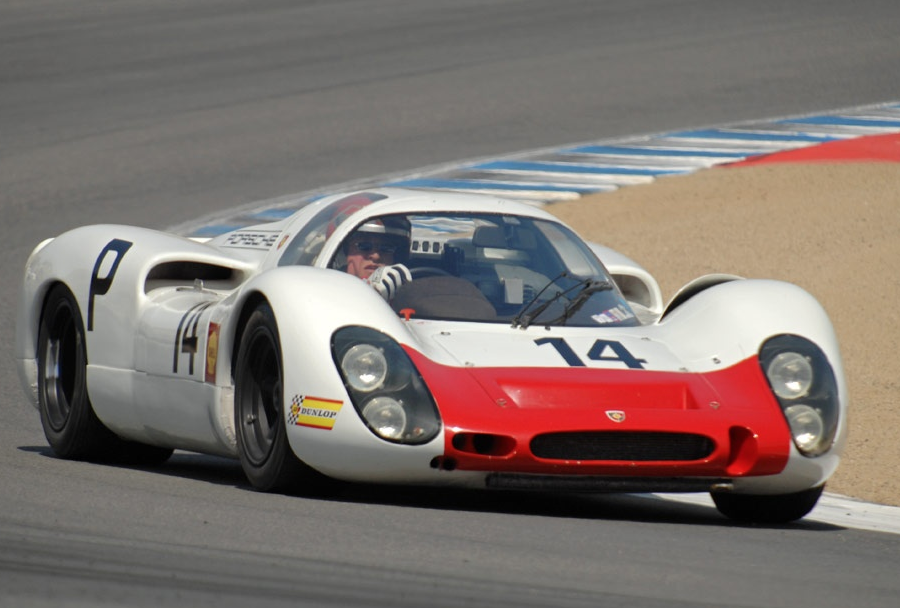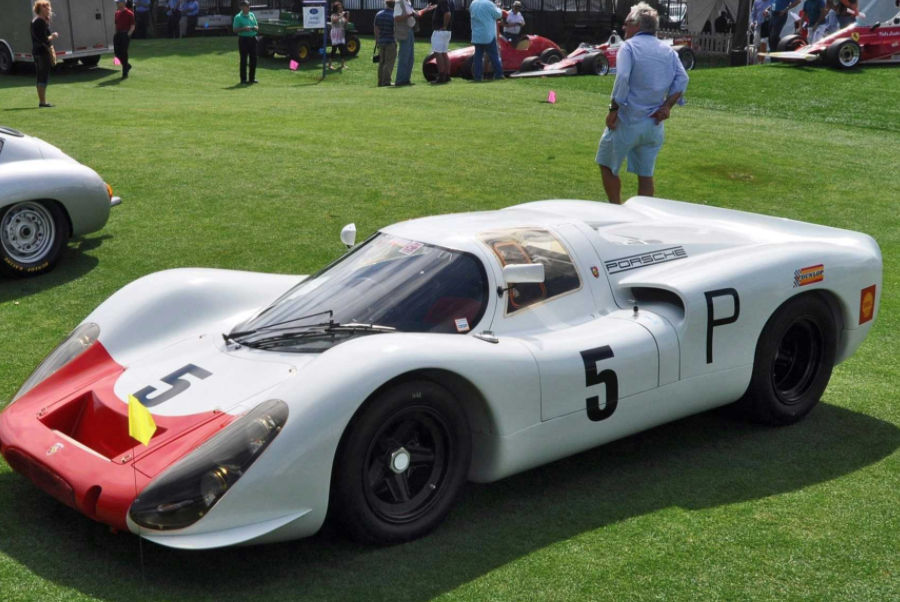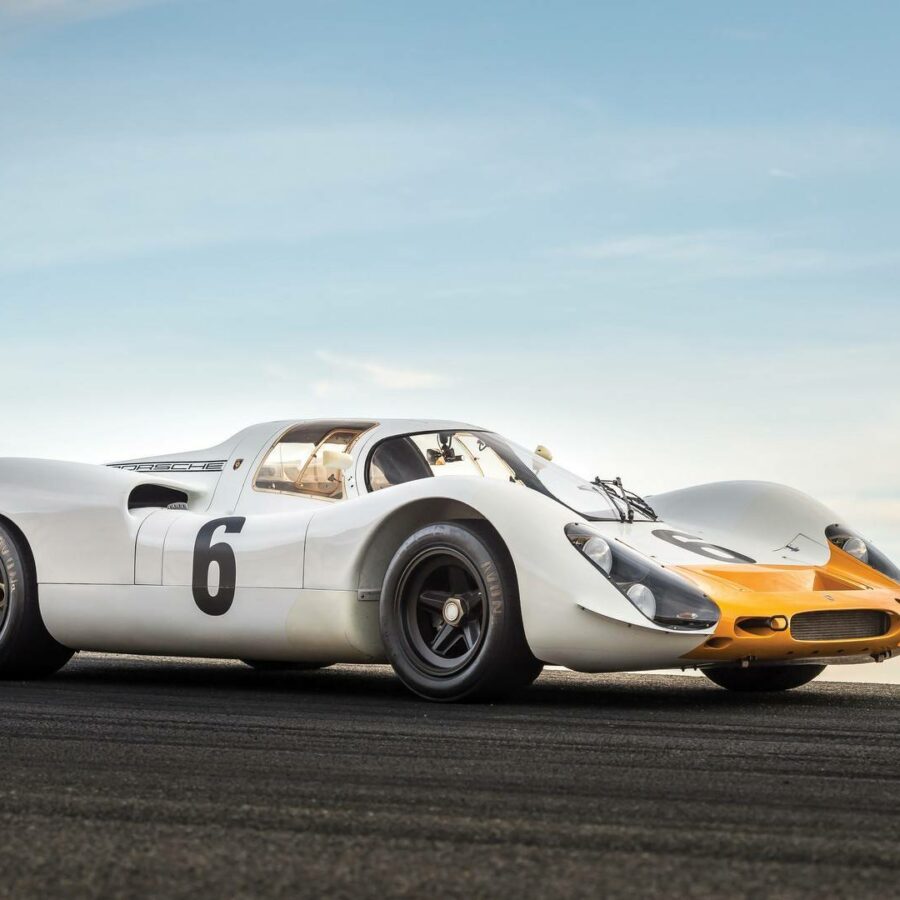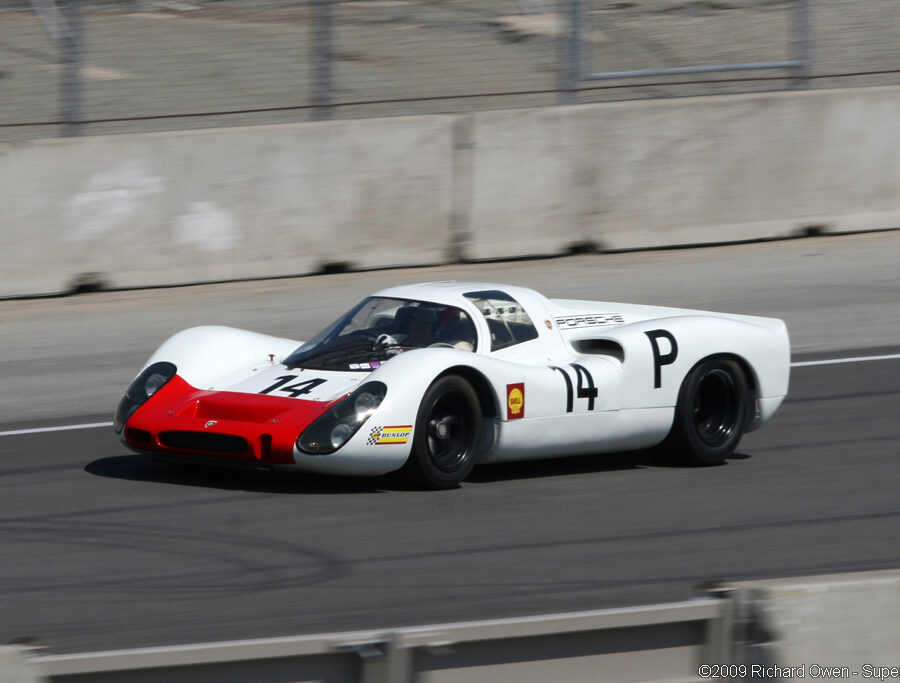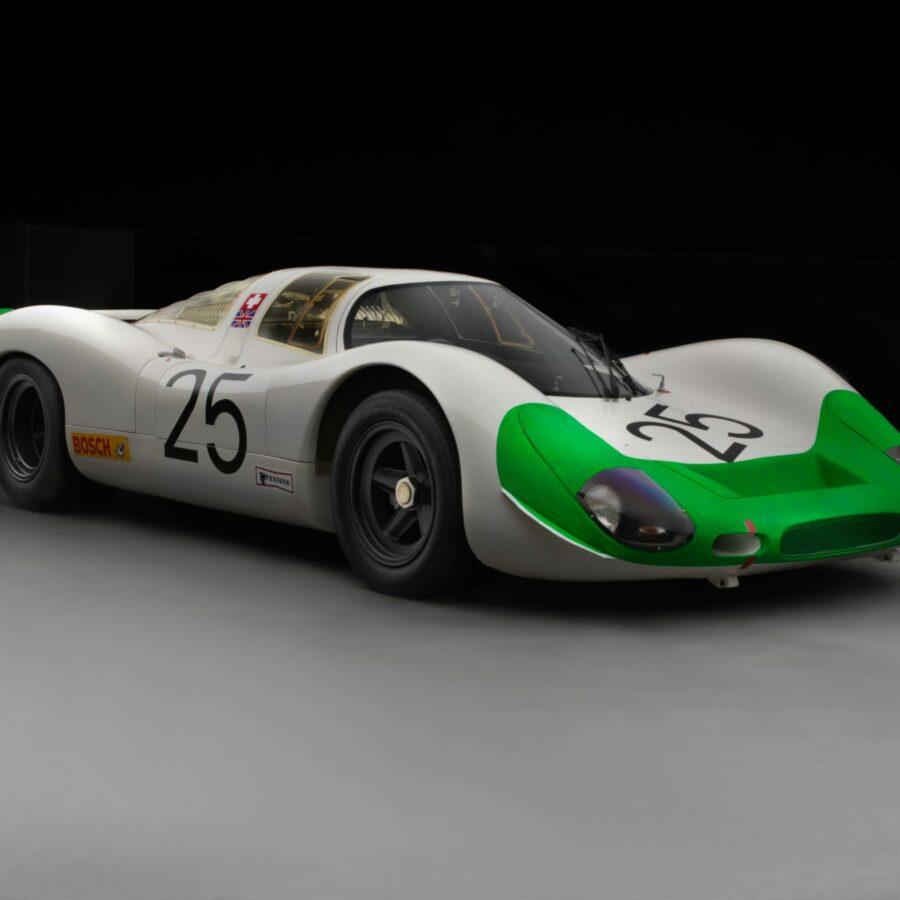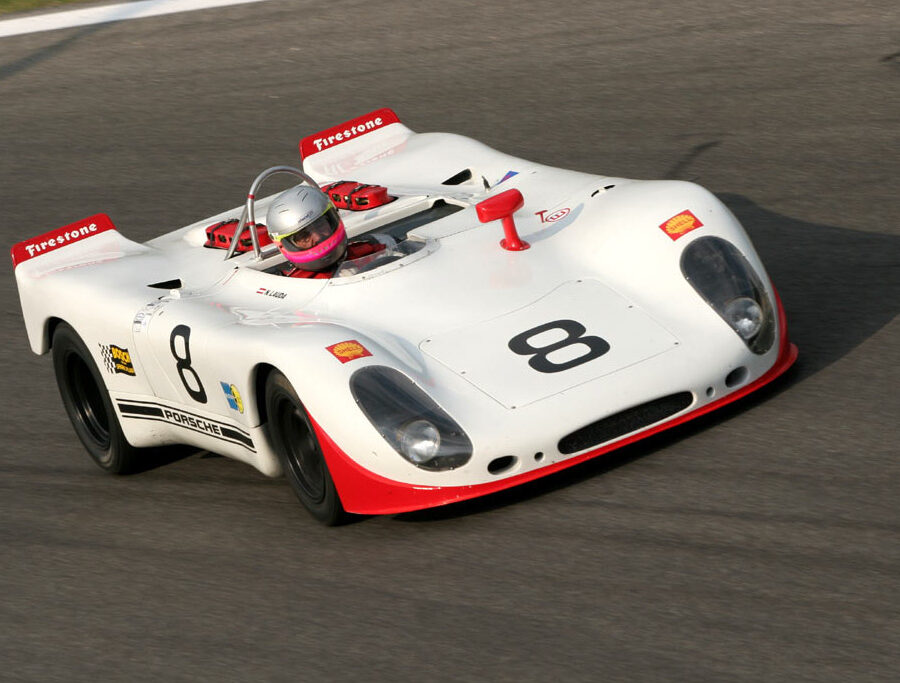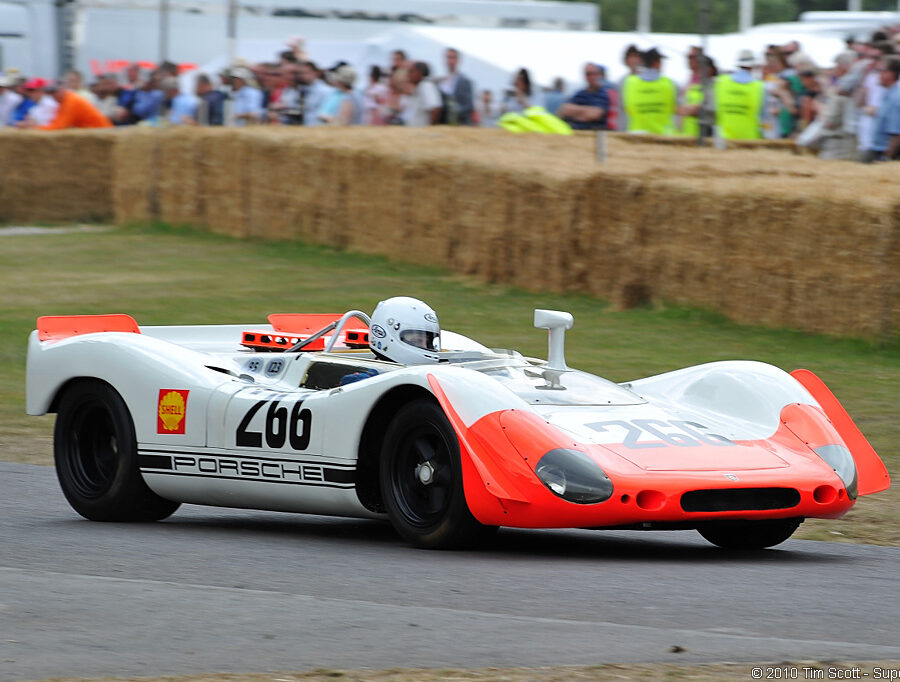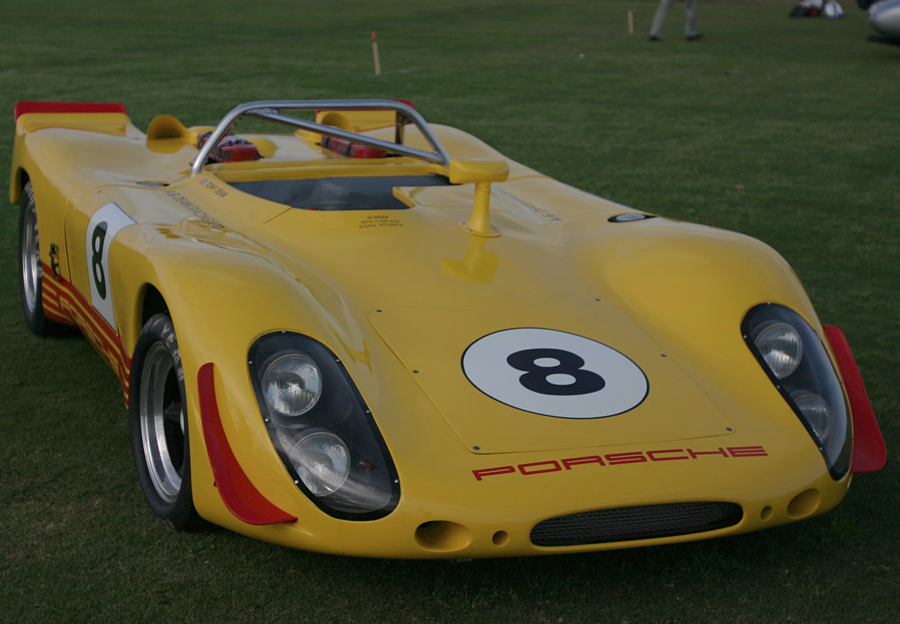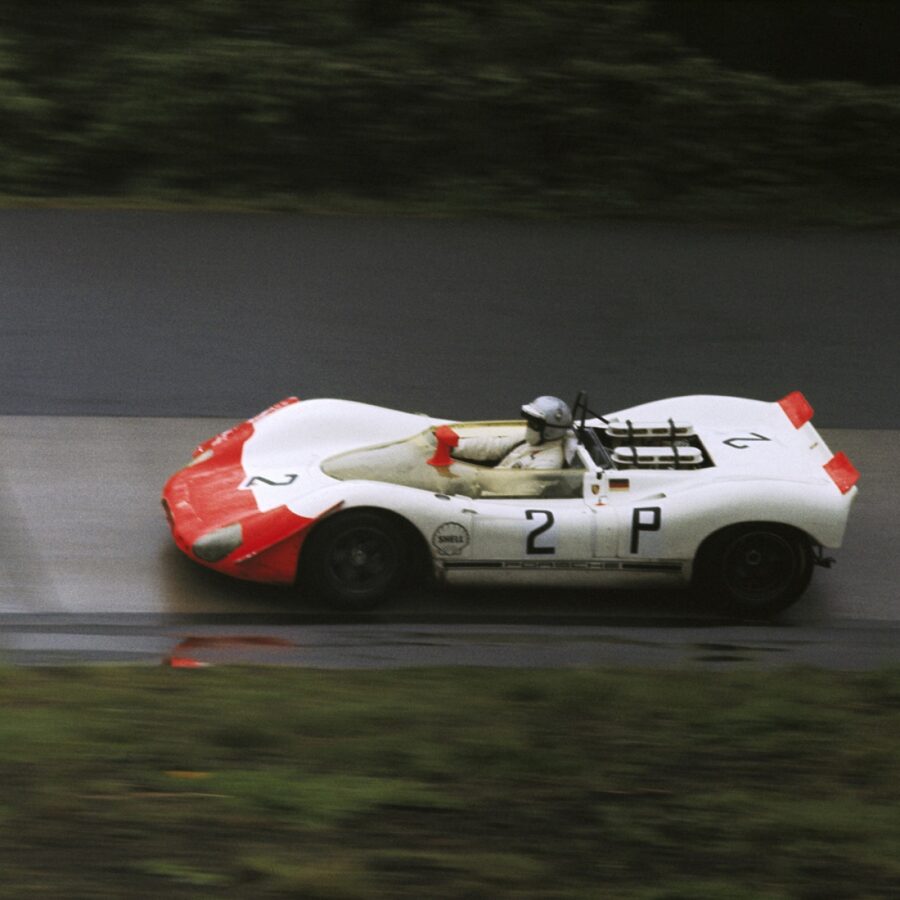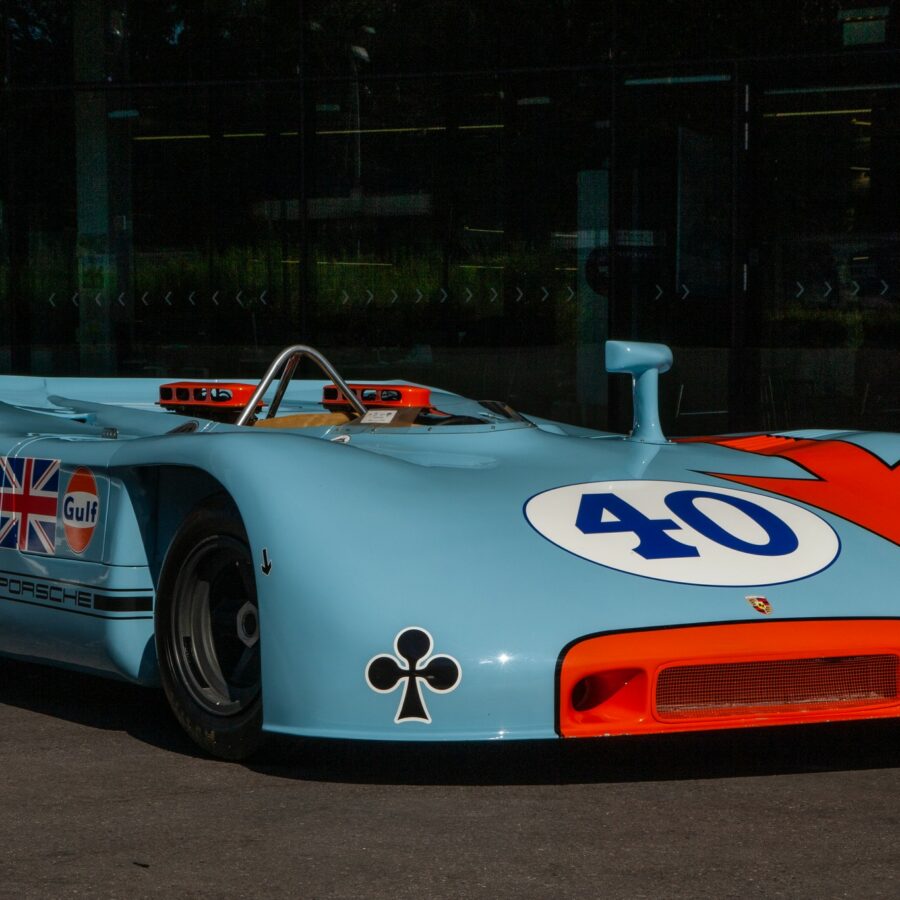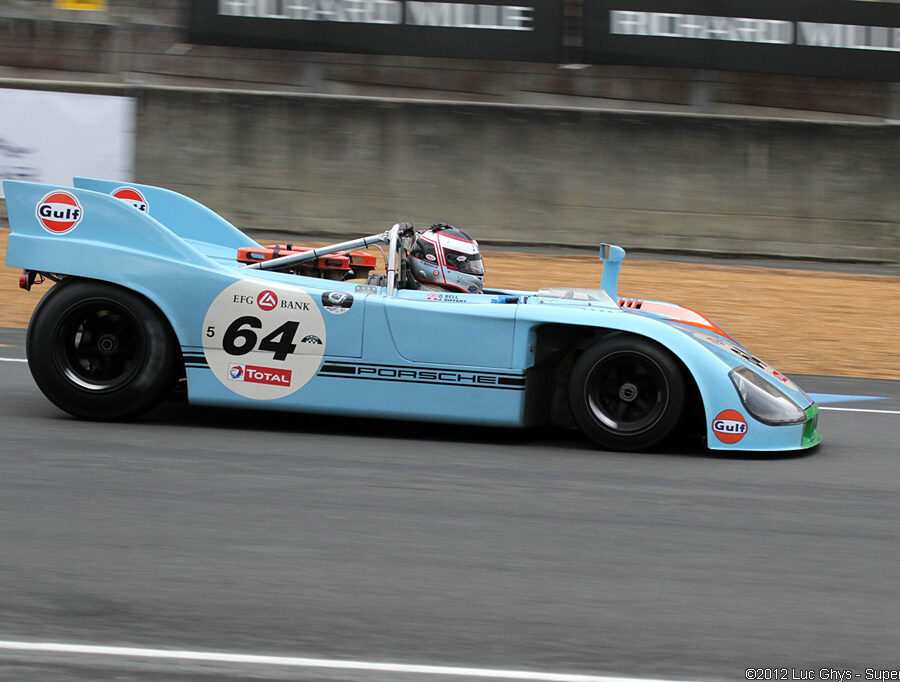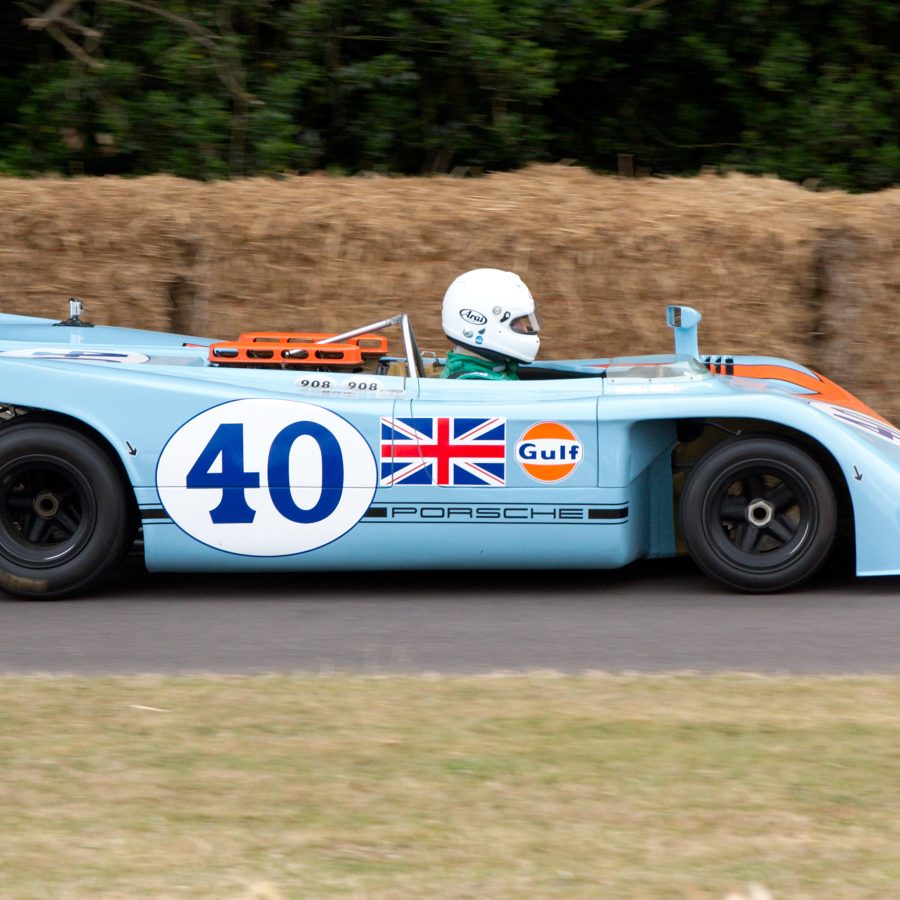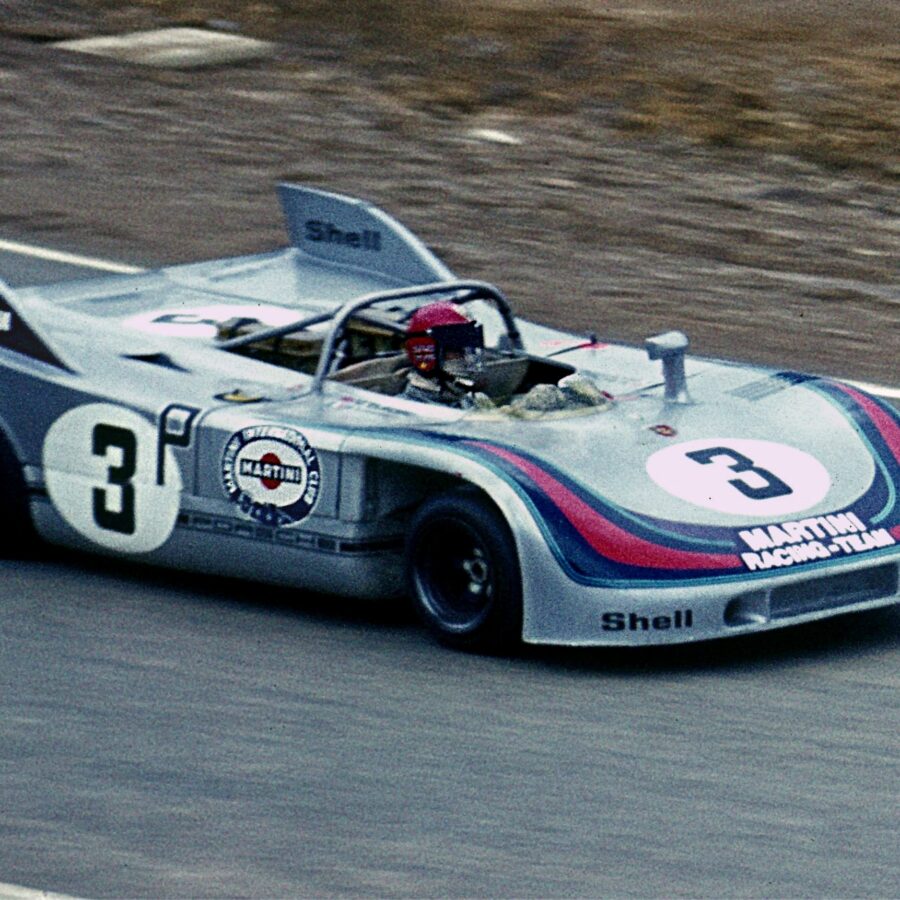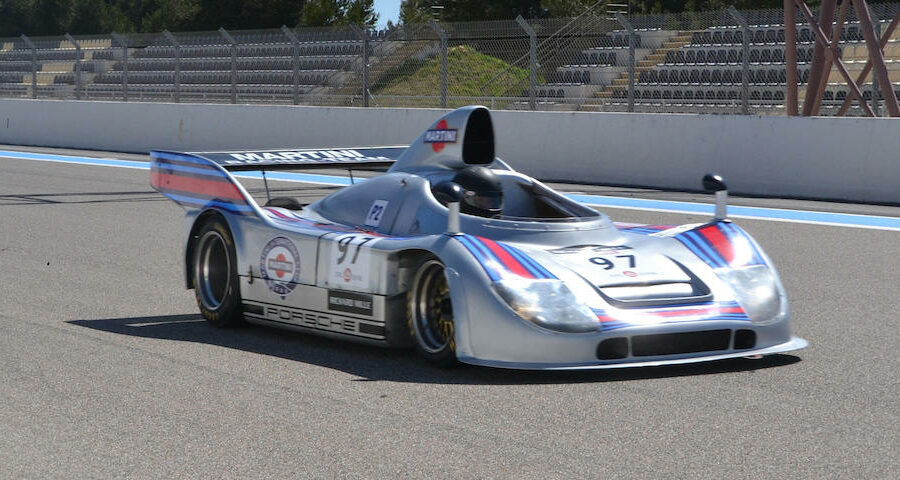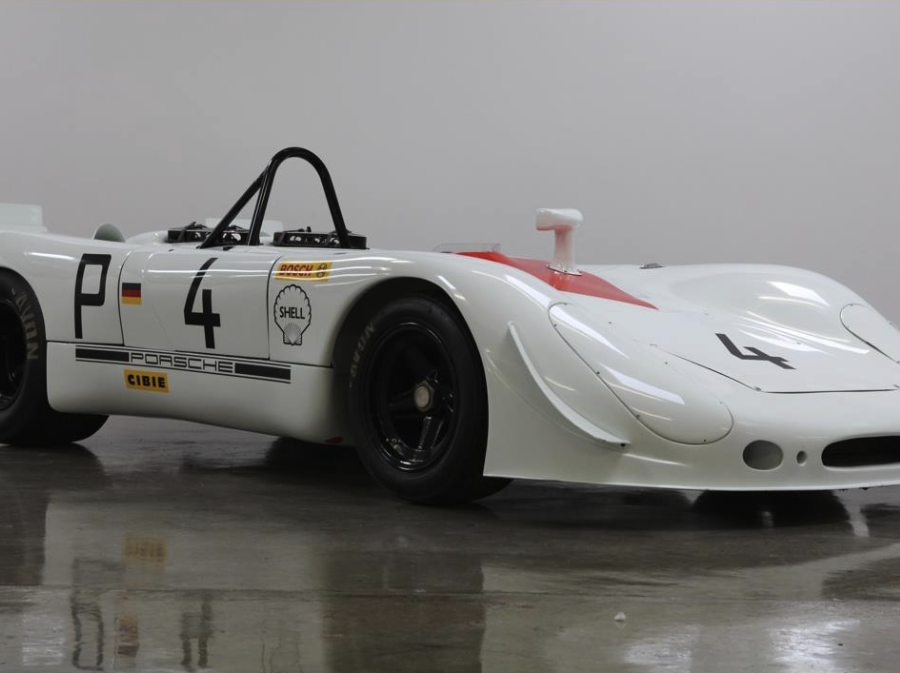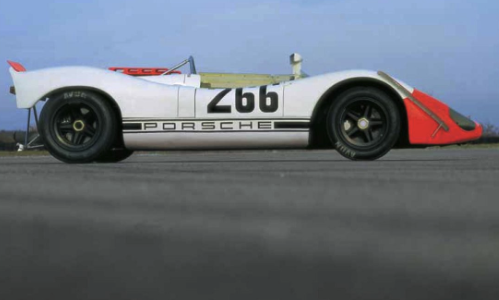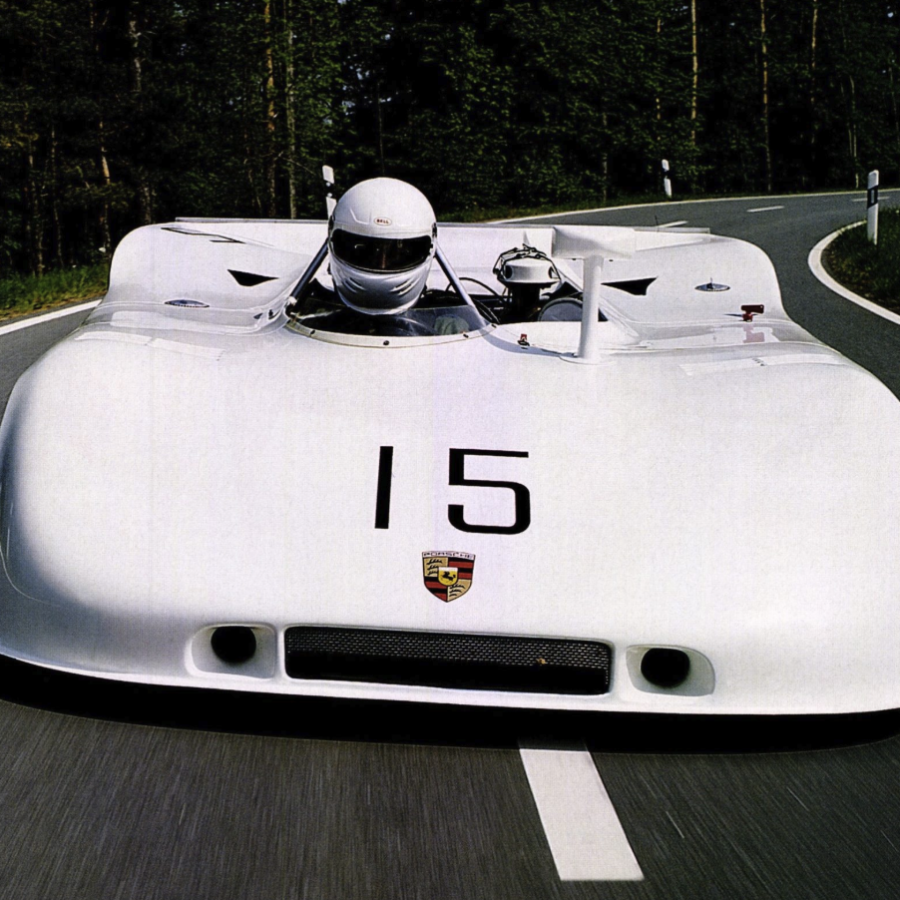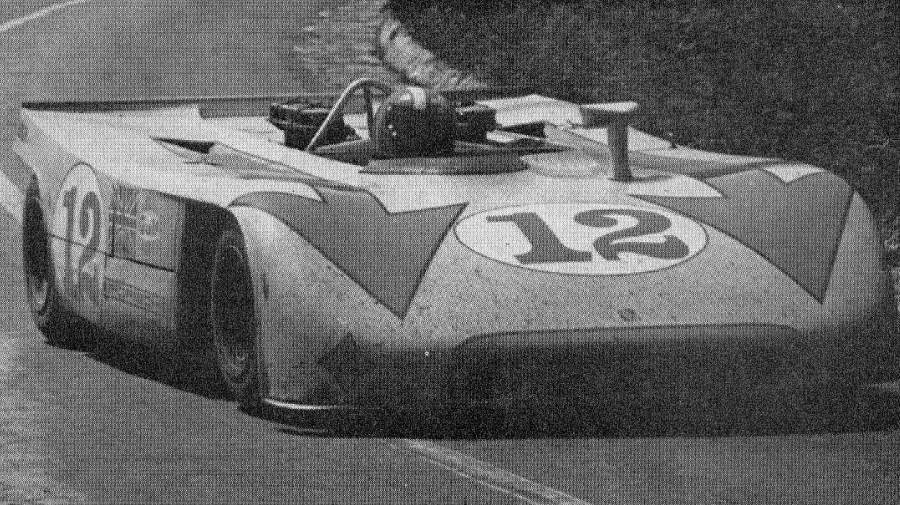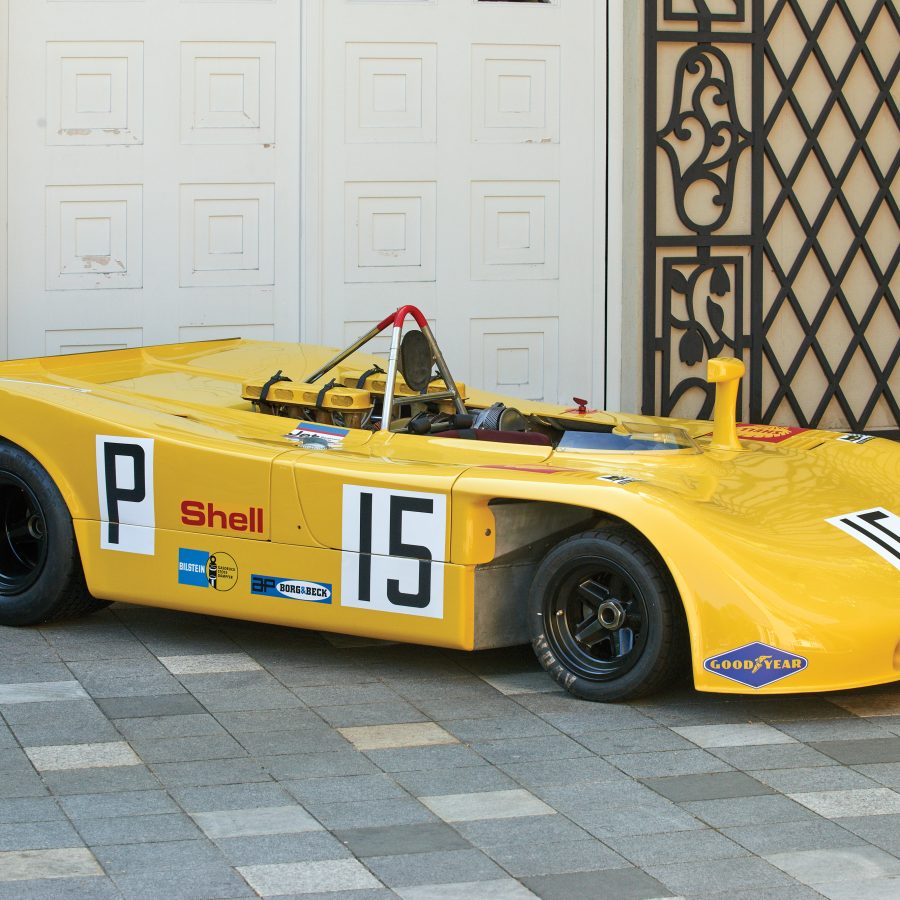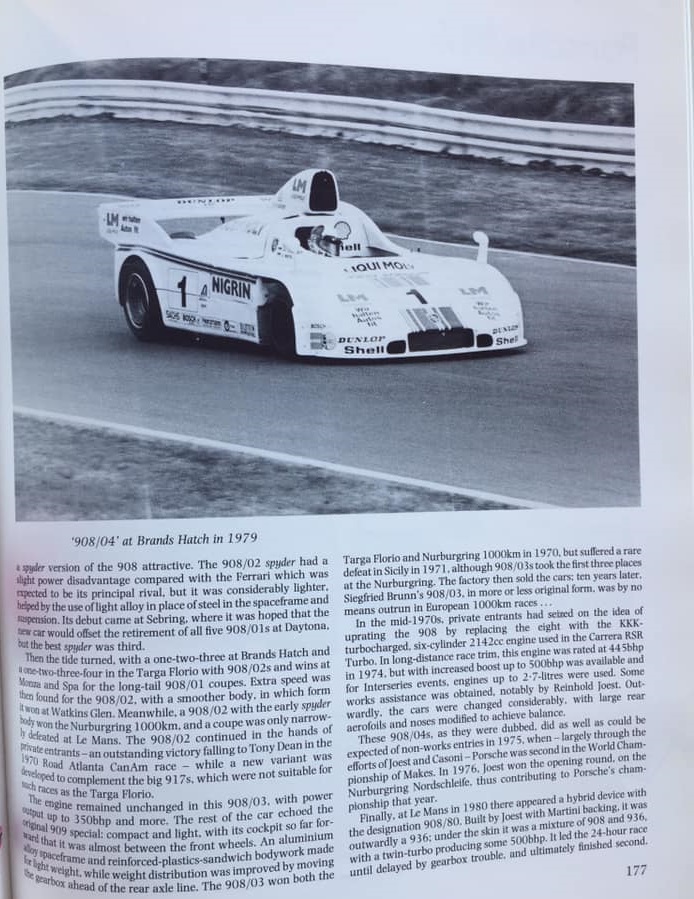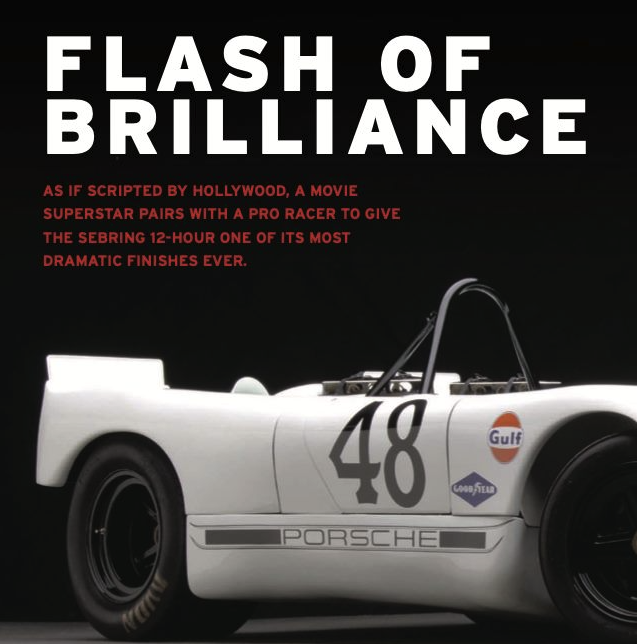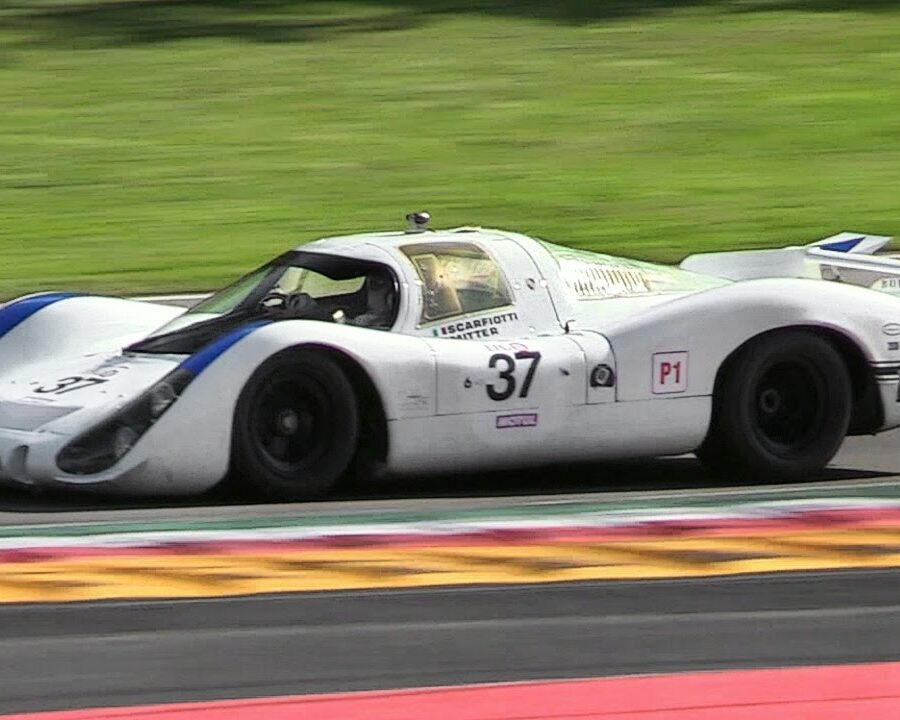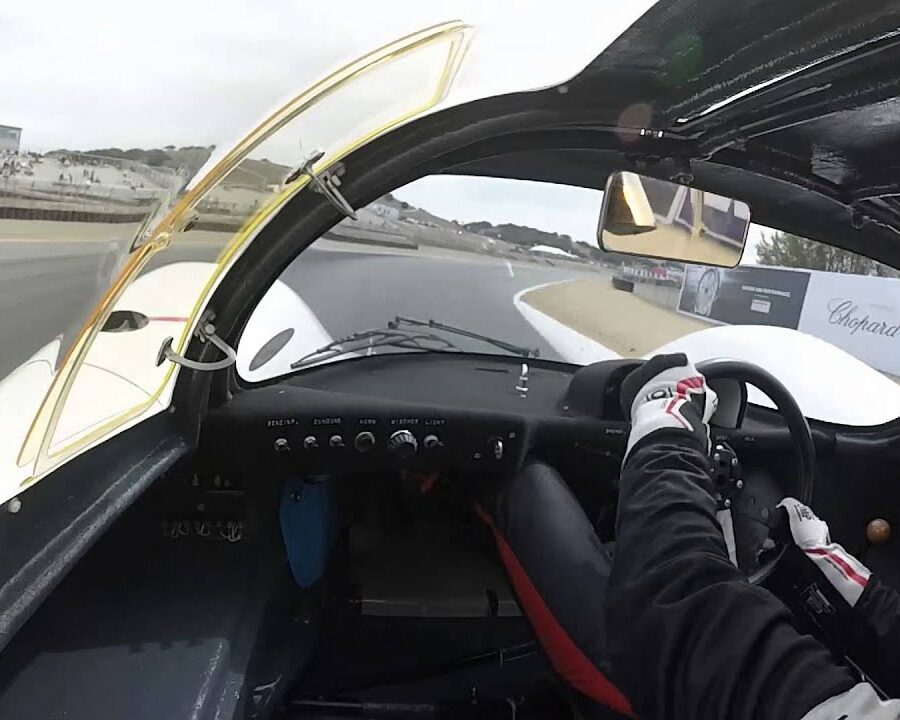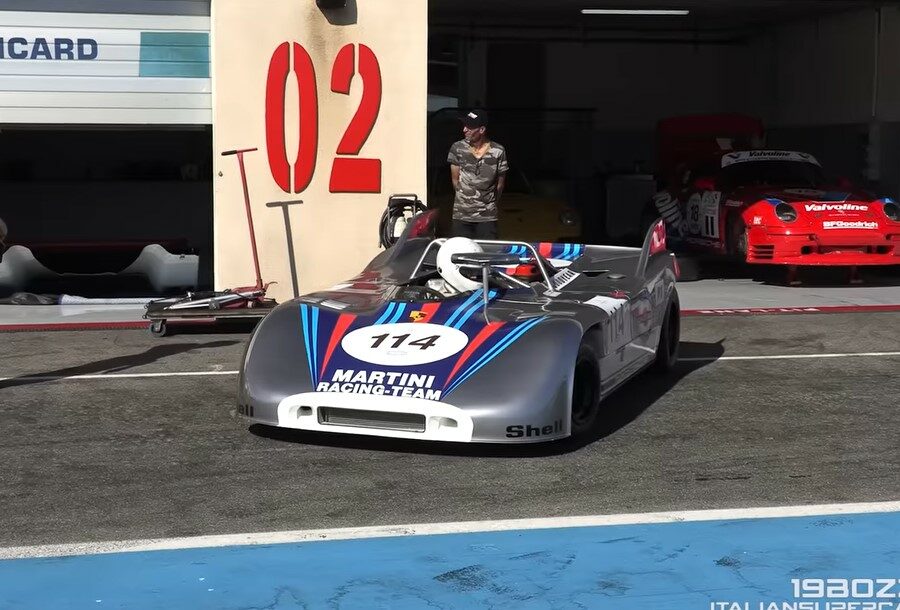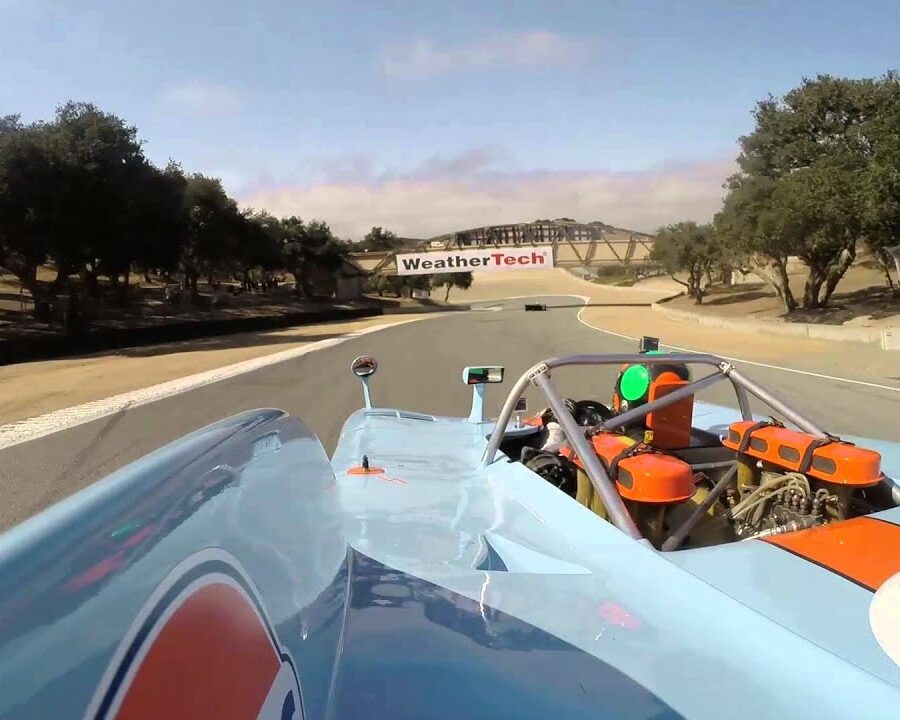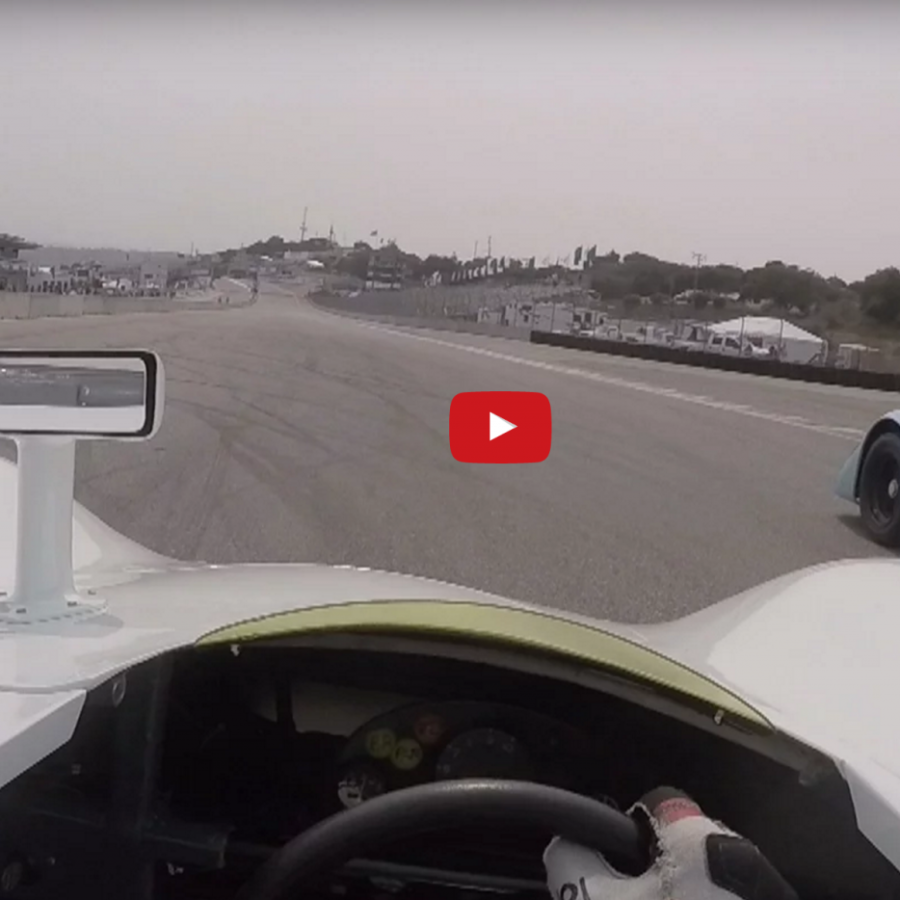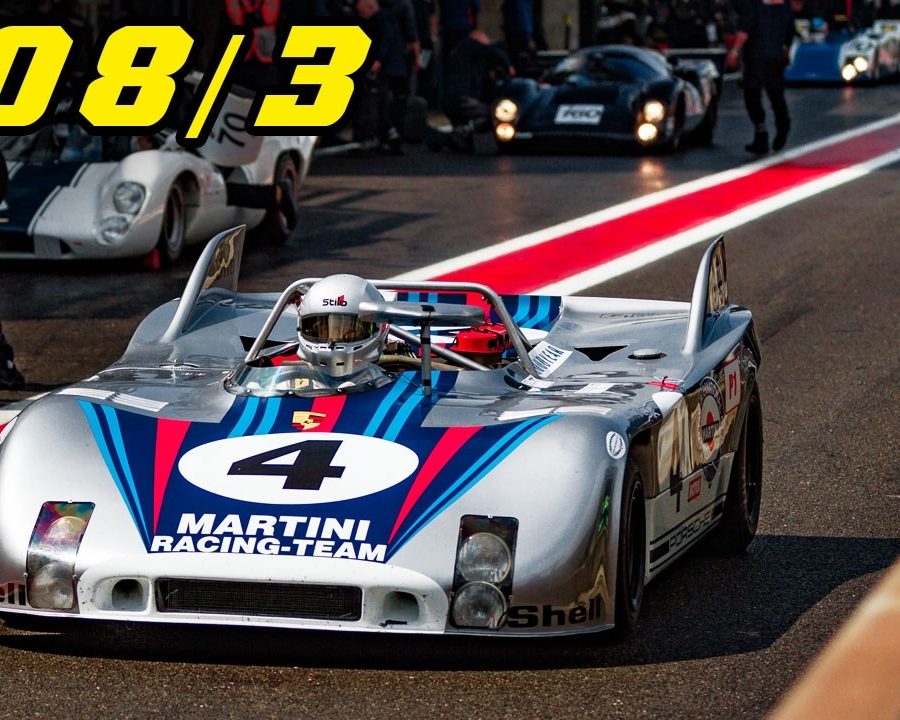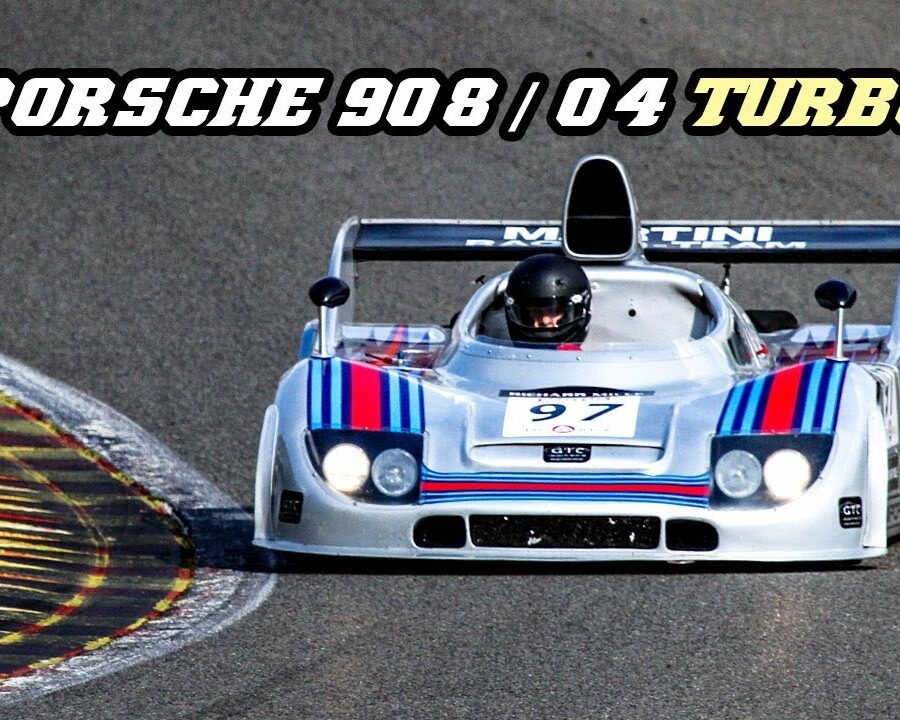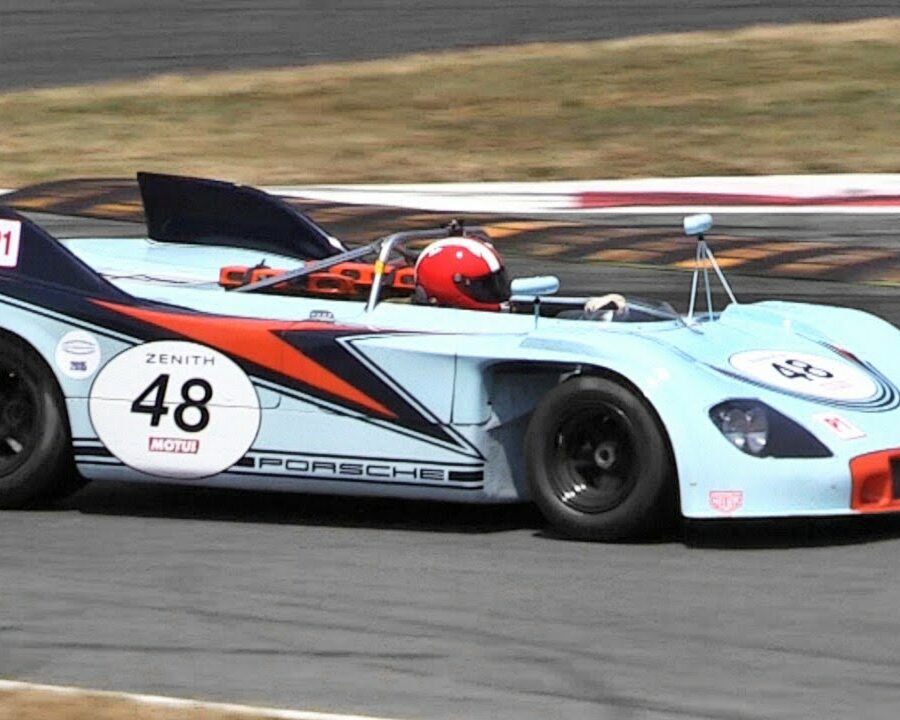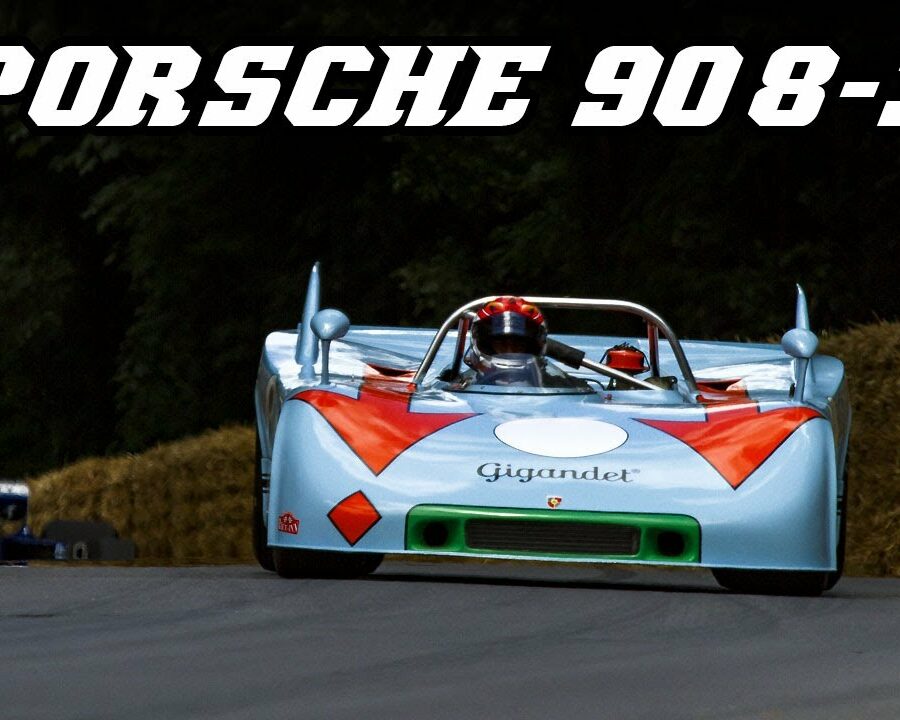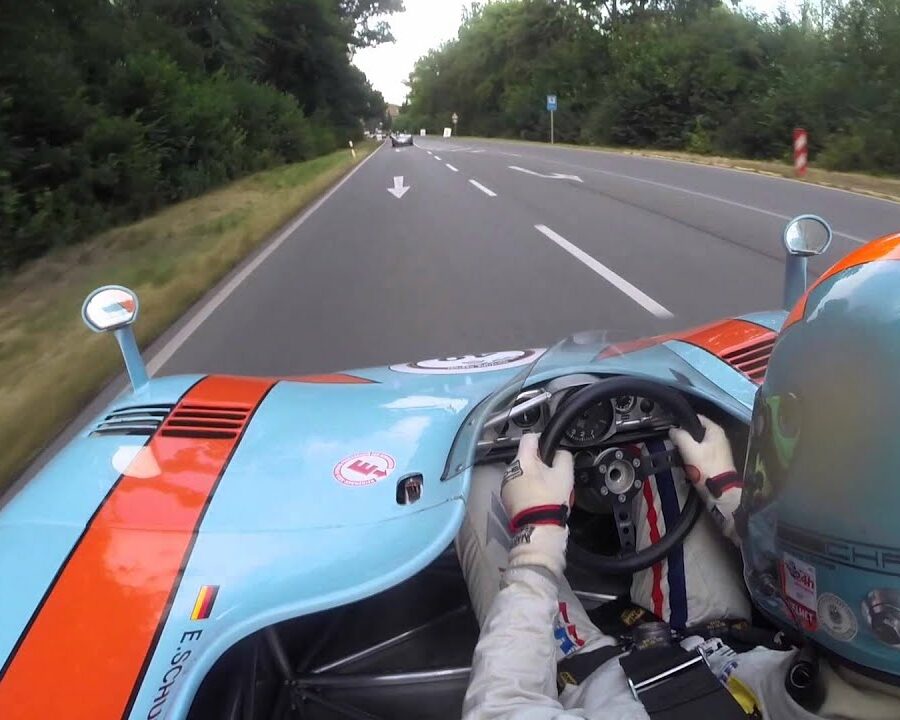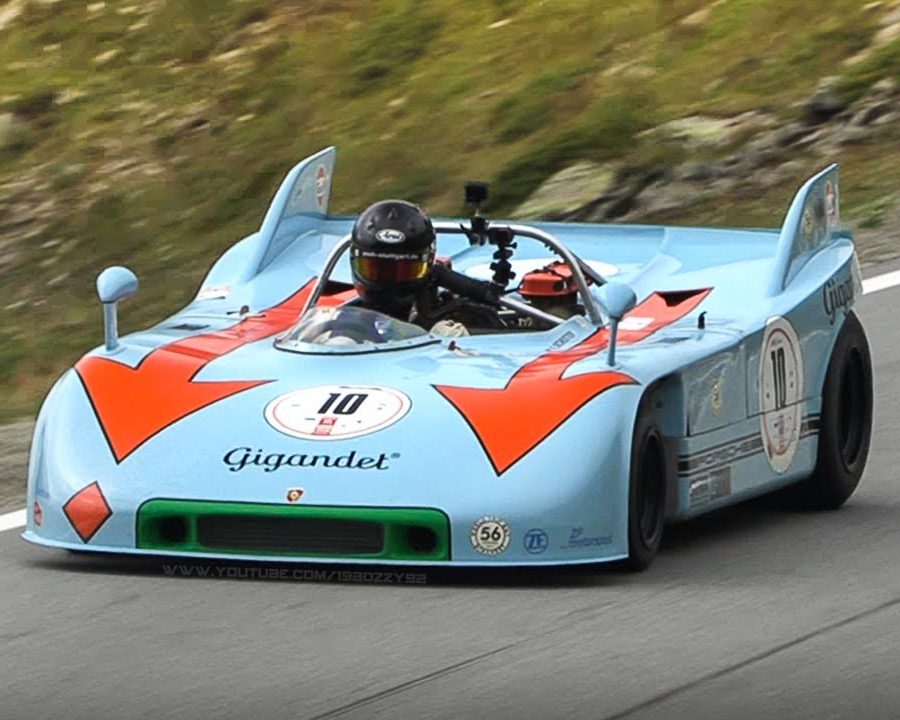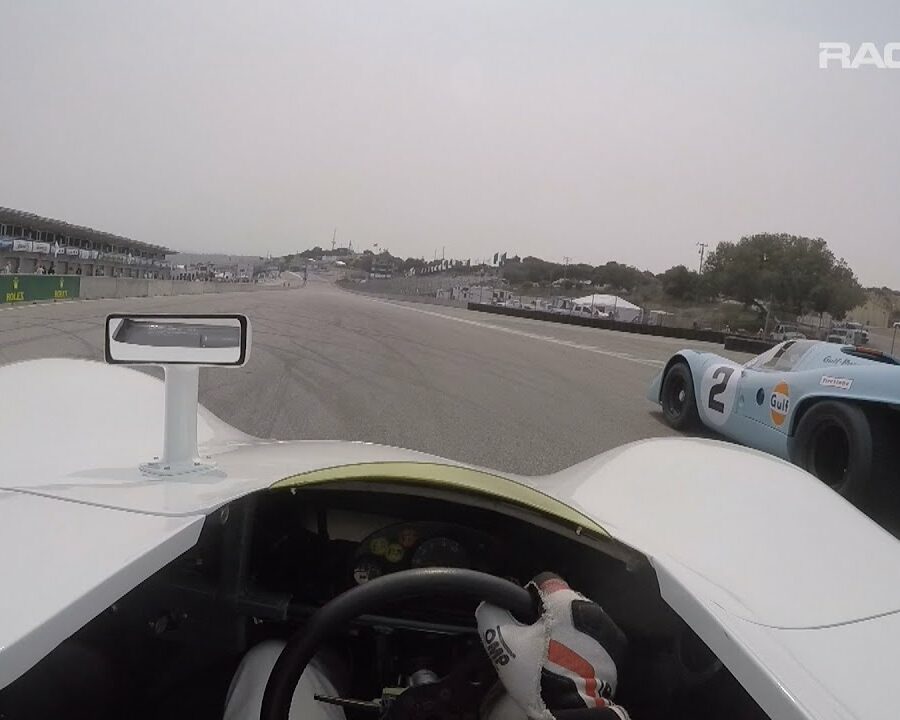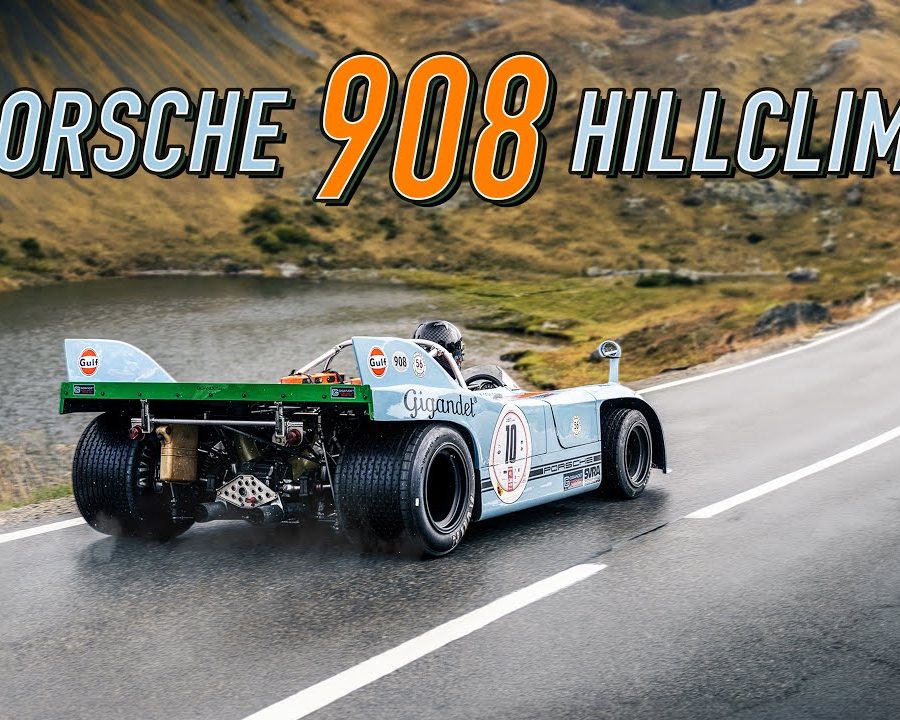Porsche 908
Porsche was a big underdog during the 1967 World Championship. Despite using engines no larger than 2.2 liters, Porsche lost the World Championship of Makes by one single point in 1967. Porsche decided to up engine size and even the odds. The 908’s mid-mounted engine was essentially a larger version of that used by the 2.2-liter 907. The FIA’s new three-liter prototype (Group 6) and five-liter sports car (Group 4) regulations adopted for 1968 presented the right opportunity. Porsche would build 31 examples of the 908 from 1968 to 1973 in both long-tail and short-tail coupe and Spyder configurations. See all Porsche 908 Research.
FOR SALE: 1969 Porsche 908/02
An early example of Porsche’s racing success
FOR SALE: 1969 Porsche 908/02 “Flunder”
Available is one of Porsche’s most successful racers
Porsche 908 K Flunder Spyder – Specifications & Performance
Technical Specifications
Porsche 908 K Flunder Spyder (1969 – 1975)
The 908/02 K Spyder and 908 K Flunder Spyder were basically the same cars with slightly different bodywork
Porsche 908 LH Flunder Spyder – Specifications & Performance
Technical Specifications
Porsche 908 LH Flunder Spyder (1969 – 1975)
There was a belief that longer bodies are more aerodynamic and are therefore better for faster tracks, so a 908 Flunder Spyder with a longer tail was created
Porsche 908/01 K Coupé – Specifications & Performance
Technical Specifications
Porsche 908/01 K Coupé (1968 – 1969)
In the late sixties, Ferdinand Piëch wanted Porsche at the top of motor sports and the 908 was his answer.
Porsche 908/01 LH Coupé – Specifications & Performance
Technical Specifications
Porsche 908/01 LH Coupé (1968 – 1969)
In the late sixties, Ferdinand Piëch wanted Porsche at the top of motor sports and the 908 was his answer.
Porsche 908/02 K Spyder – Specifications & Performance
Technical Specifications
Porsche 908/02 K Spyder (1969 – 1972)
Notching up over 50 major victories and more than 100 podium results, the 908/02 Spyder is one of the most successful Porsche race cars
Porsche 908/03 Spyder – Specifications & Performance
Technical Specifications
Porsche 908/03 Spyder (1969 – 1971)
This 908 received a completely new tubular frame based on that of the 909 Bergspyder and its three liter engine was moved forward.
Porsche 908/03 Spyder Turbo (1975 – 1981)
Porsche decided to end its 20-year history of factory sports car racing and sold the 908/03 cars to customers. In 1975, some 908s were fitted with turbocharged engines.


